The Lodges - Past and Present
![]() Written by
Harold
Written by
Harold
- Published in Stories and Articles
- Read 413 times
- font size decrease font size increase font size
- Image Gallery
My raison pour for writing this article is to provide a brief history of each of the lodges that once, and in some cases continue to operate in various incarnations on the big lake, including information regarding their outpost camps, available side trips/fly outs, and much more.
Over the years I have been very fortunate, thanks to many guests, guides, staff, and various other sources both past and present, to acquire a number of stories, publications, pictures and background information, which together with my personal trip journals and photographs that I have compiled over the 40 years I’ve been fishing the Bear, embody the underpinnings of this narrative.
By way of example, a number of the aforementioned stories have been published on Great Bear Lake Outdoors in the section labelled: “Bear Tales,” which can be found at:
http://www.greatbearlakeoutdoors.com/stories/bear-tales
I consider this project to be an ongoing chronicle that hopefully will never quite be finished so long as we keep adding to it, and there are still some of us around, who remember what went on during the early days of lodge operations.
Therefore if you would like to share a memory, or happen to come across any images, newspaper and/or magazine articles, brochures, names of people who owned, managed, worked/guided at any of these lodges, details about how the lodge operated, or can add a specific year/date to a picture or publication, please forward them to me via the GBLO Facebook or home page, and I will incorporate them.
And most importantly, if I happen to have gotten anything wrong, please don’t hesitate to straighten me out.
Finally I would like to express my sincere thanks to Chris Ireland, and Steve “The Fly’n Hawaiian” Gardner, for their invaluable contributions to this project, because it’s a stone cold fact that I couldn’t have done it without them.
The Lodges – Brothers in Arms
Throughout the years there were as many as 6 independently owned lodges that operated on the Bear, every one unique in their own right, with each being located on different parts/arms of the lake.

Trophy Lodge continues to operate on the Smith Arm, Arctic Circle and Branson’s shared the McTavish Arm, while Great Bear Lodge fished both the McTavish and McVicar Arm, or Turíli, which is its traditional name.
Plummer’s Lodge – which was originally called Great Bear Lake Lodge Ltd. - was initially located at the west end of Conjuror Bay on the McTavish Arm, until they moved to the Dease Arm in 1967.
Grey Goose Lodge, which is the most recent addition to this list, is located in the community of Délı̨nę on the Keith Arm.
And if you happen to be interested in a bit of history on how the various arms came by their names, here you go:
http://www.greatbearlakeoutdoors.com/stories/historical-facts/item/73-brothers-in-arms
Getting Started
Did you ever stop to consider the costs and logistical nightmare it was - and still is - to build, maintain, and operate a lodge on Great Bear Lake?
And I’m not referring to a rustic outpost camp, were if you were lucky there would be a rudimentary wooden structure or tent where you could take your meals, and maybe, just maybe, have an actual bed and mattress to sleep on. But rather a fully staffed, full service lodge with all the comforts of home, including electricity, hot and cold running water, indoor plumbing, fresh, hot meals prepared in a commercial style kitchen, central heating, and at one lodge, even a sauna and hot tub.
To build and maintain these lodges everything, and I mean everything, from building materials and various types fuel, to kitchen equipment, furniture, and even tooth pics, had to be flown, barged/boated, or brought in by ice road, if one was even available.

Just imagine the shit show that would ensue if you happened to forget, or couldn’t source some critical item when you needed it most. Needless to say it would be a rather long and expensive run to the nearest building centre and/or grocery store, as the closest happen to be in Yellowknife which, as the crow flies, is approximately 500 km. or 300 + miles away.
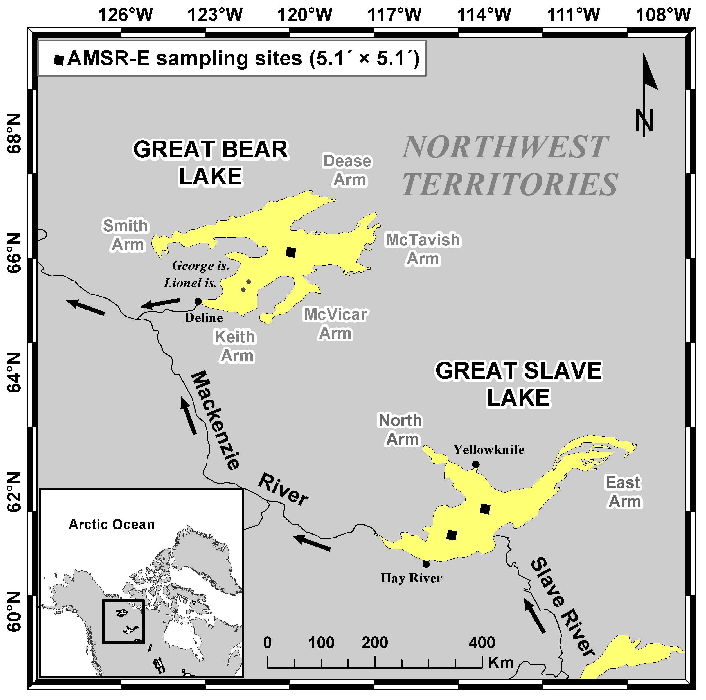
Getting staff and guests to and from the lodge was another ongoing challenge, and as the numbers grew, float plane transport was no longer a viable, or cost effective option.
So how did they overcome this particular problem?
Well, Plummer’s and Trophy built runways that could accommodate larger aircraft. In fact Plummer’s constructed one at their current location that is capable of handling a 737, and another at their Tree River Camp for the lodges DC3, aptly named the Tree River*.
https://www.youtube.com/watch?v=sNOwcYfYfx0
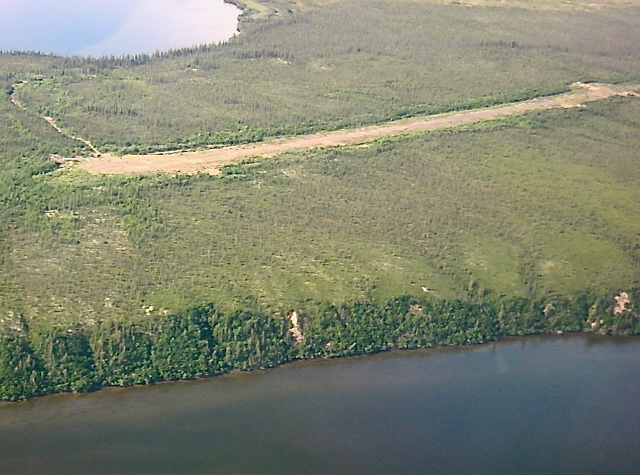

Branson’s, Great Bear Lodge, and Plummer’s, when at its original location, used the strip at Sawmill Bay known as Caywood Airfield, which appears to have been constructed in the early 1940’s:
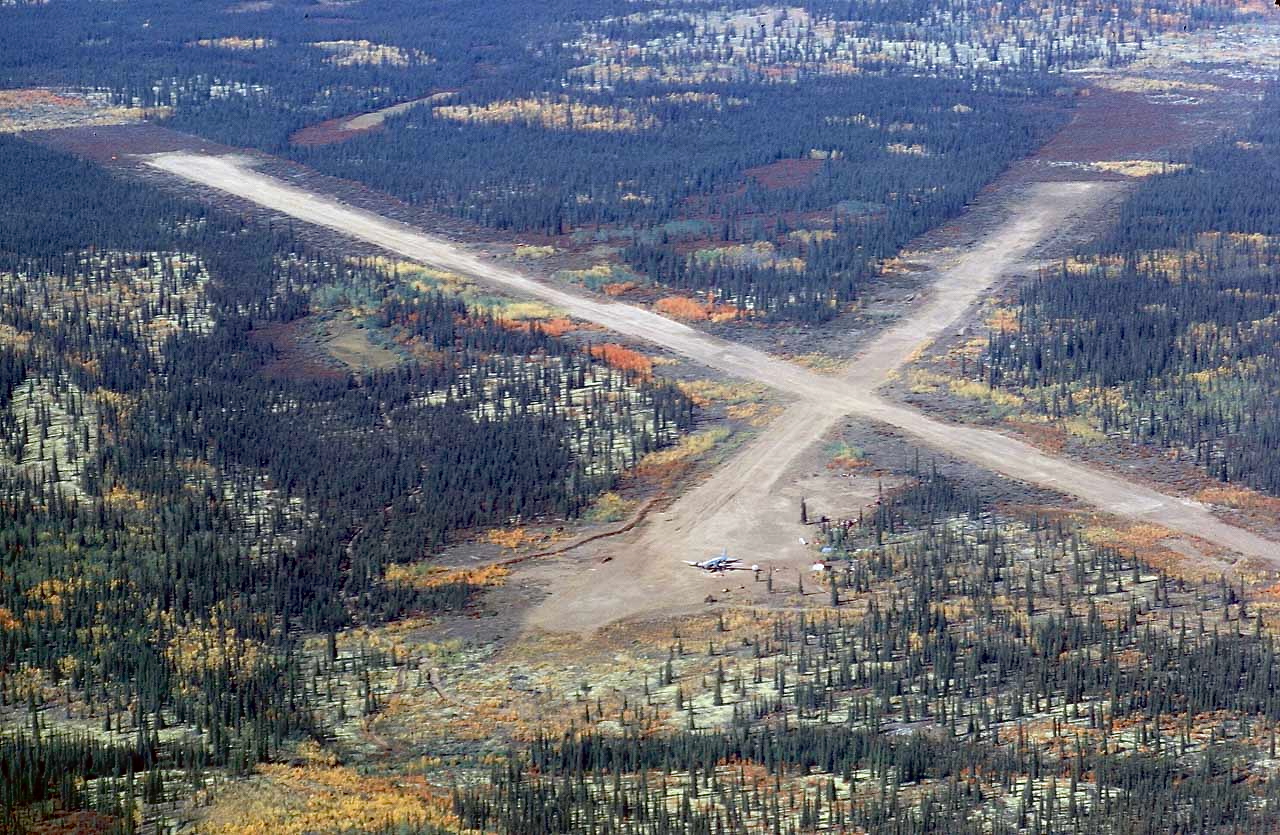
Because it was much closer to both lodges, Branson’s and Arctic Circle eventually began using the strip at Port Radium that had been built by the mine operators. Interestingly, the strip was only a short distance from the DEW Line (Distant Early Warning) tropospheric scatter site.
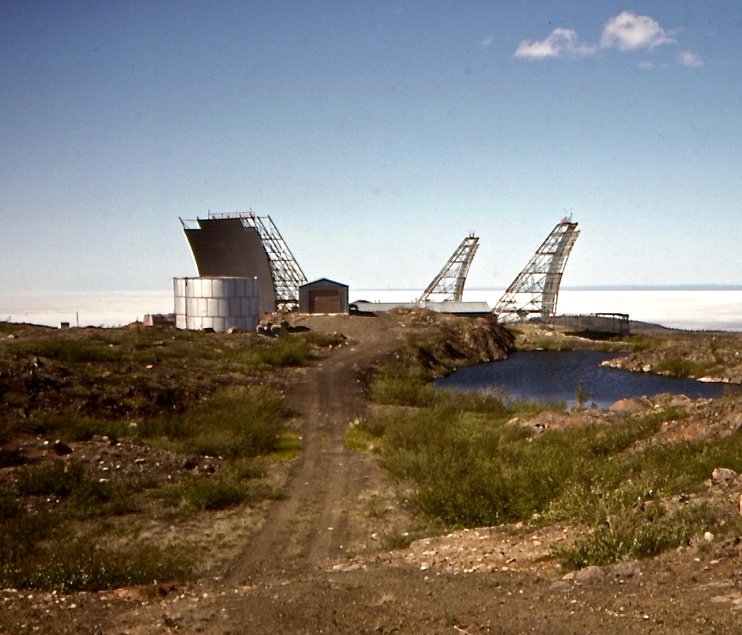
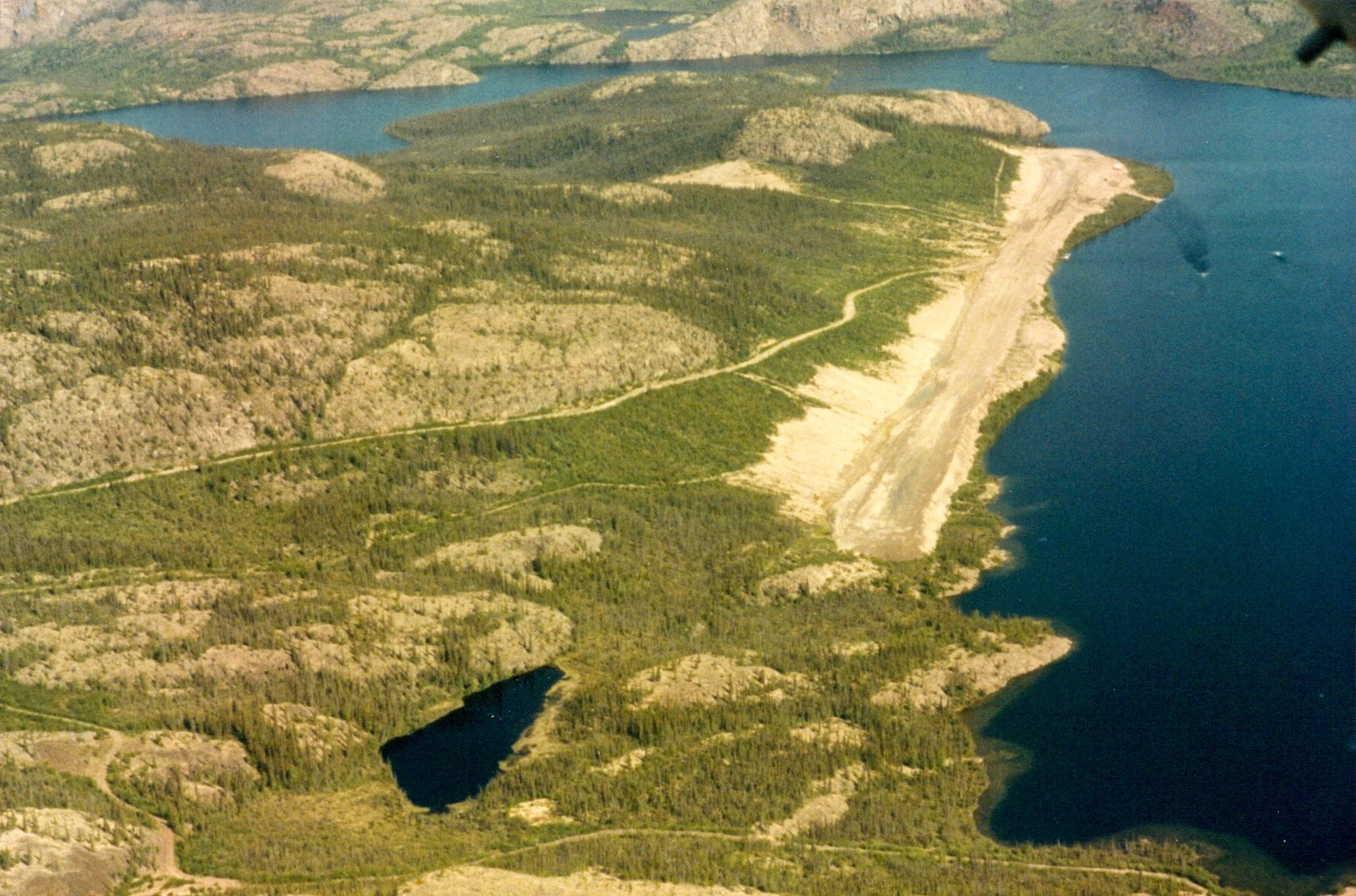
But even if they didn’t have to construct their own runway, various pieces of heavy equipment were needed to maintain them, and that was only part of the fun, because all of that equipment had to be transported to the site, assuming it was not left behind by the organizations that originally built them.
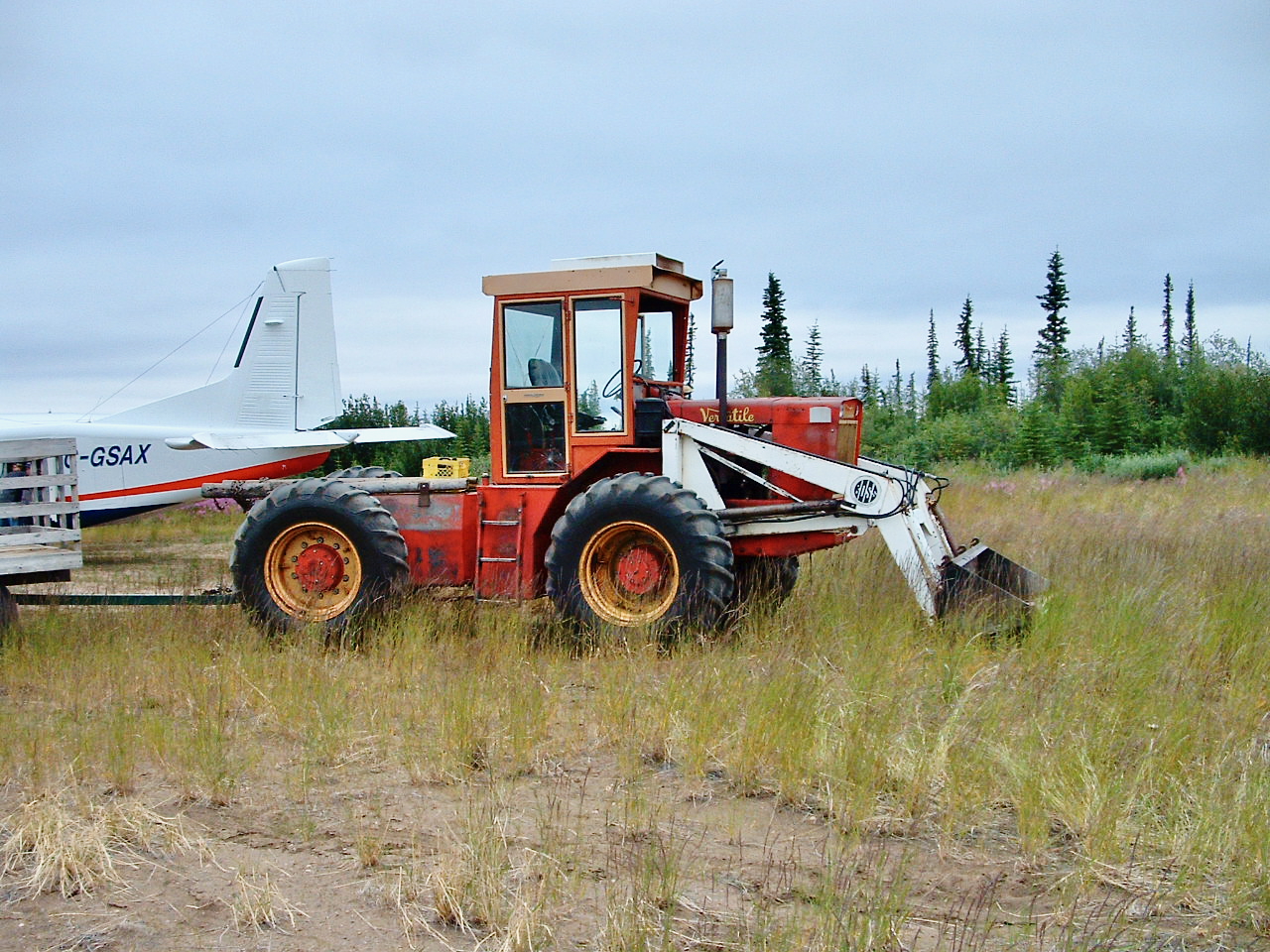
The story of how Plummer’s got the equipment needed to build and maintain the runway at Tree River is to say the least rather amazing, and I’ll leave it to Chummy to tell you how that all went down. The links to that story and many others, are set out below in the sections titled a “Brief Memoire,” and “Getting There and Elsewhere.”
In addition, there were, and are any number of new and ever changing government directives, regulations and standards, that cover anything and everything, including but not limited to, fuel transport and storage, aircraft certification and operational requirements, environmental protection, and food handling safety, that had to be implemented and rigorously adhered to.
Moreover, let’s not forget that boats and motors had to be brought in to accommodate as many as 40 guests per week, and a number of extras were needed for, and had to be transported to the various fly-out and outpost locations, which in most cases were located a considerable distance from the lodges.
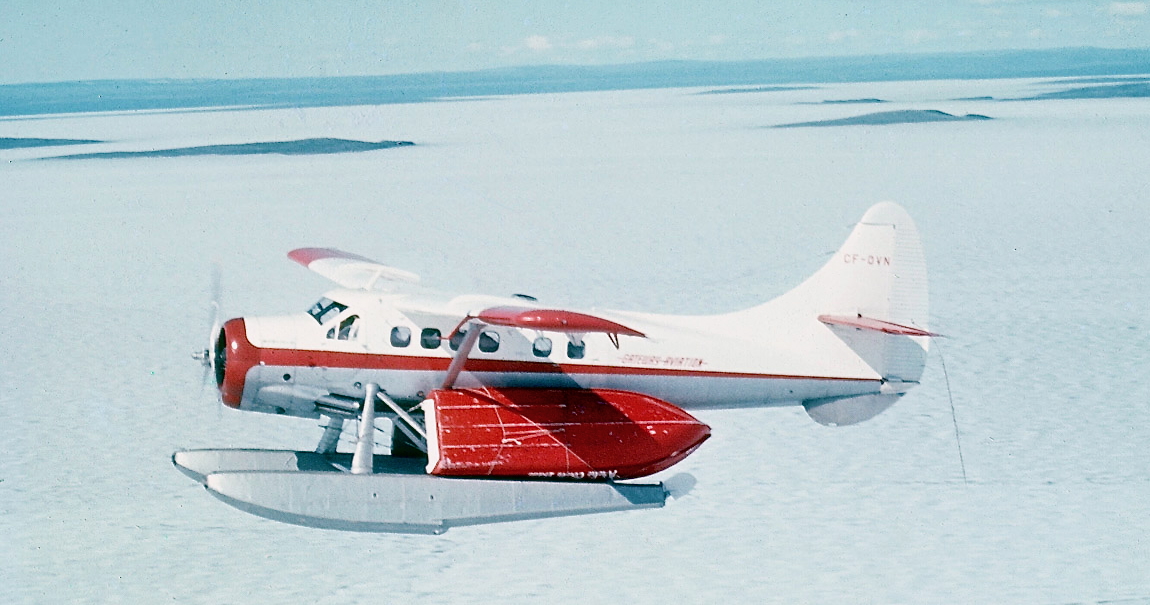
Additionally, all of the lodges had float planes available throughout the season at one point in time, which were not inexpensive to purchase/lease, operate and maintain.
And with only a 6 to 8 week season to work with, needless to say the margins are/were rather skinny given the overall operating costs, and if issues arise – which they are inclined to do - be they weather related or otherwise, it/they can easily make all the difference between having a successful season, or a disaster from a profit and loss standpoint.
So hats off to all of those individuals who took a massive risk both financially and otherwise, thereby making it possible to fish both this amazing body of water, and many breathtaking Arctic rivers in a truly unique, and otherwise remarkable part of Canada.
A Brief Memoire
Plummer’s
No other sportfishing lodge owners who operate on Great Bear have as rich, or as lengthily a history as the Plummer’s family, or as I like to call them: The First Family of Arctic Sportfishing.
Plummer’s built their original lodge on the Bear in 1959, thereby making it the first sportfishing lodge to operate on the lake.

In 2025, together with Grey Goose Lodge, Plummer’s remains the only independently owned and operated lodge on Great Bear, and while the lodge changed hands in 2024, several of the
new owners are in fact Plummer’s alumni, with Chummy Plummer himself continuing to play an active role in its operation.
Back in the day, before the internet became the primary way of getting the lowdown on a lodge and booking a trip, they attended any number of sports shows throughout North America, something they still do to this day, albeit on a more limited basis. Being out on the show circuit required a substantial commitment of time and resources in that during the 60’s, 70’s and 80’s, a number of those shows, including the Toronto Sportsman’s Show, ran for well over a week.
As noted, they moved the entire lodge (buildings and all) over 100 miles/160 km’s to the Dease Arm in 1967 – which is quite a story in and of itself – locating it on an island, just a short boat ride from the picturesque Narakay Islands.

One of the reasons Warren Plummer gave for making the move, was because in his opinion that part of the lake was starting to get a bit crowded. I can see that this would certainly have been the case, with Great Bear Lodge being located just around the corner, and anglers from Branson’s making regular visits to the area.
While I don’t know how long it has been a Plummer’s staple, each Thursday they currently host what is known as “Wine & Cheese.” And while there is definitely some wine and cheese to be had, it is a bit of a misnomer, in that this is the night where the Chef goes off menu, and can really strut their stuff. It’s also an evening where guests and guides mix and mingle to share a drink, food, some stories, and maybe even a game of pool and/or cards.
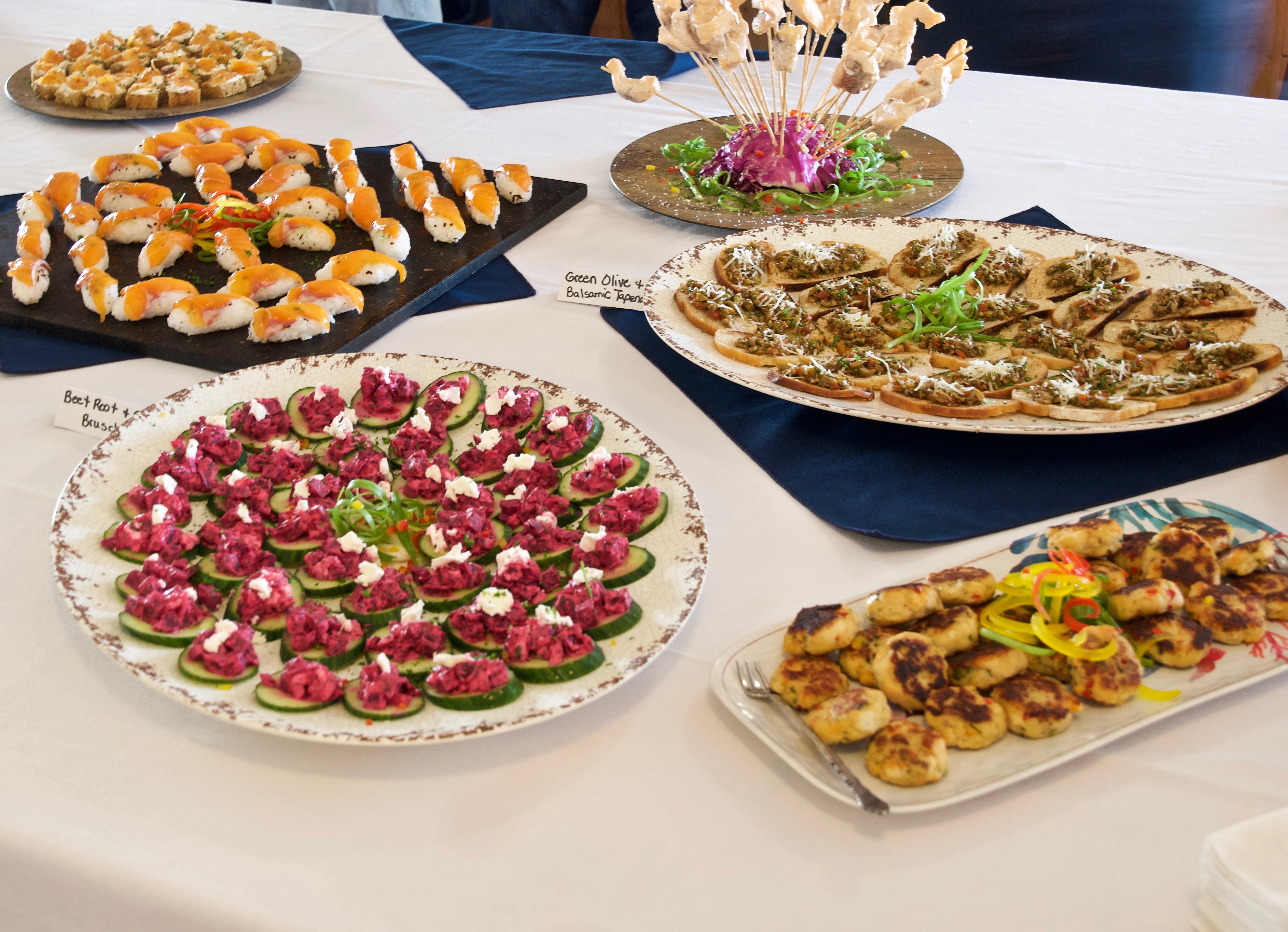
There have even been occasions where live music was provided.
The earliest pricing that I have come across was from 1962, when it cost a whopping $695 pp. for a week’s fishing.
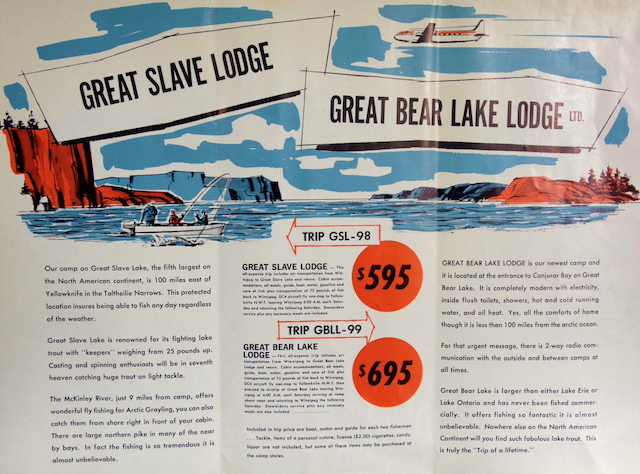
In terms of the cost of a fishing license in 1962, while I’ve been unable to source a specific figure, the total government revenue from commercial and sportfishing licenses was $1405 in the area that included both Great Bear and Great Slave Lakes, so I think it would be fair to say that a license was relatively inexpensive. To put this into some perspective, in 1981 a fishing license cost all of $3, although today if you are an out of Territory Canadian Resident it costs just over $36, which includes a $12 Great Bear Lake Special Management Area fee.
The lodge also publishes an annual newsletter called the “Arctic Lure,” which provides a comprehensive synopsis, including photographs, of what took place during the previous season.
Fortunately Plummer’s have begun to document the history of their lodges, and you can access some excellent information regarding the history of Plummer’s Arctic Lodges at:
https://www.plummerslodgeshistory.com and https://www.plummerslodges.com
So I’ll let Chummy Plummer do most of the talking from this point on, although having said that, as you can see, I have included a few pictures and a smattering of other information in regards to their operation both in the past and more recently.
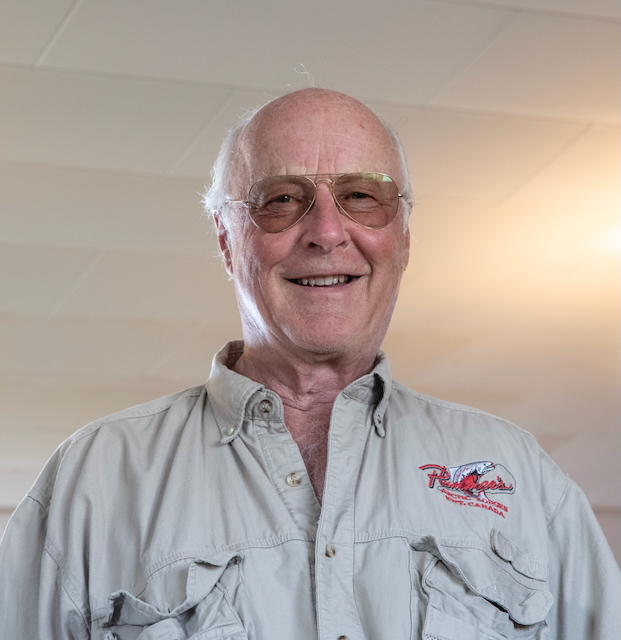
Branson’s
From what I have been able to dig up, they welcomed their first guests in 1964, and the price for a week’s fishing in and around that time was $645 pp.
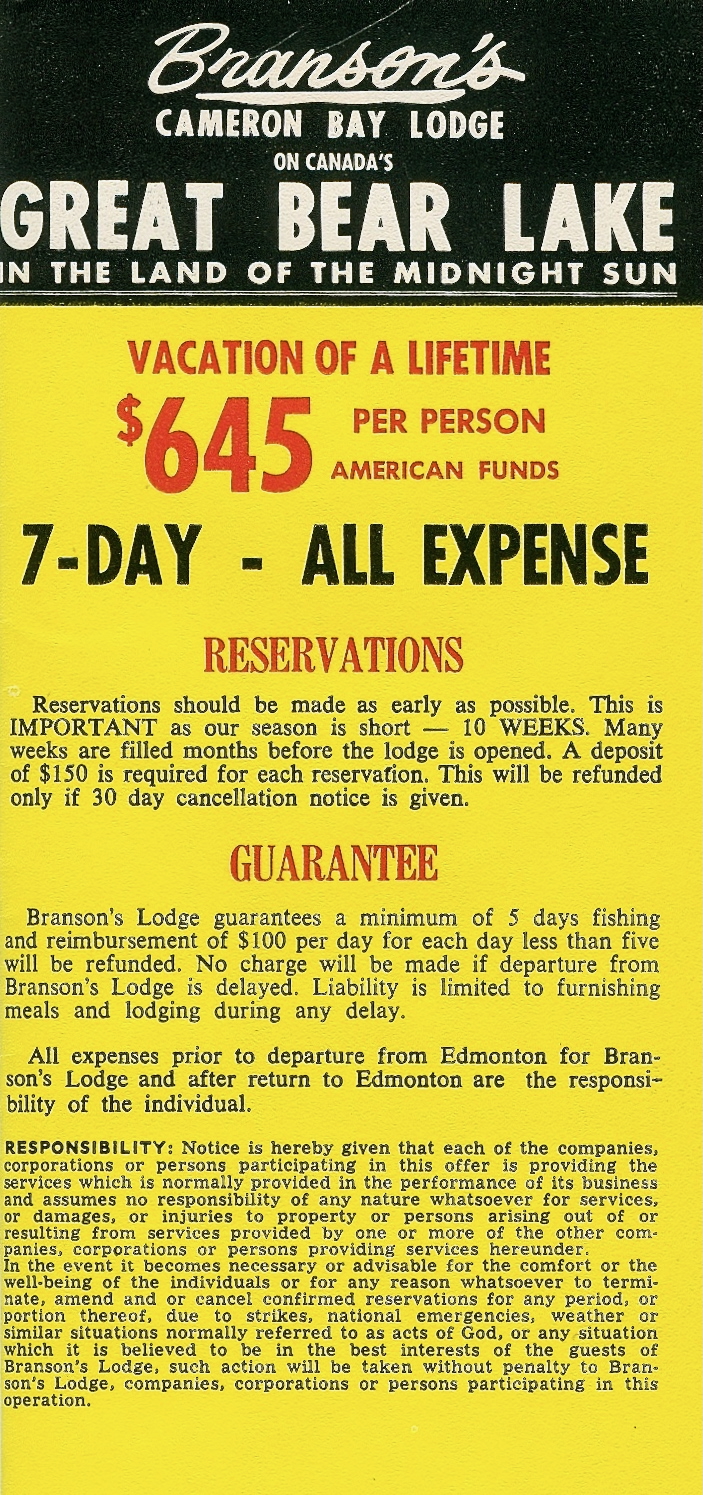
The lodge was originally called Branson’s Cameron Bay Lodge and was owned and operated by Jeanne Branson. If my information is correct, Ernie and Mavis Dolinsky took over in 1973, and then subsequently sold it to Mark Damaske in the mid to late ‘80’s.
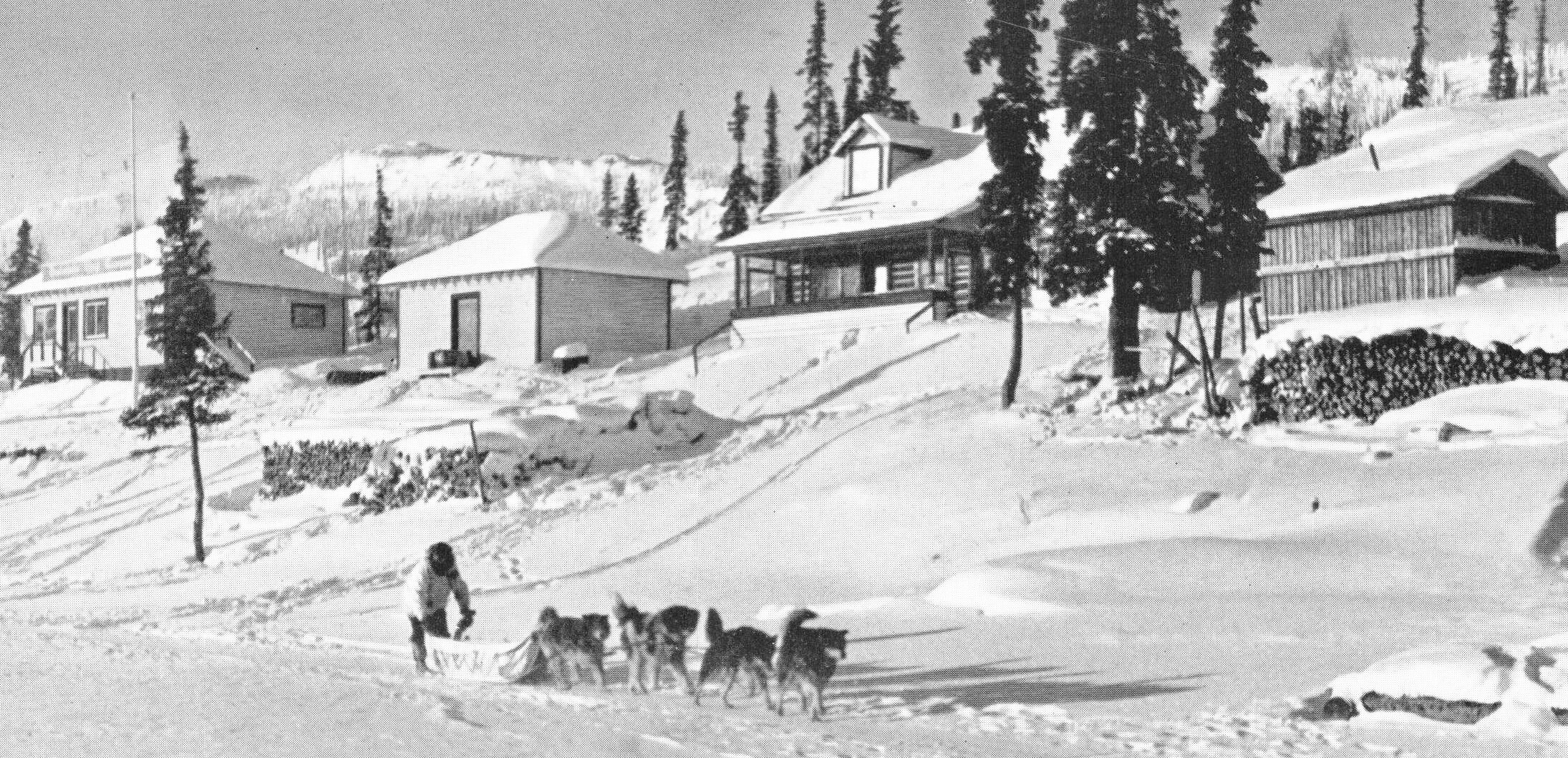
It was located in a beautiful area on the old Cameron Bay townsite, just south of what became known as Port Radium, which was the site of the Eldorado Mine. At one time the mine produced pitchblende, that was refined into radium, and also silver and uranium, some of which was used in the Manhattan Project, which led to the creation the world’s first atomic bomb.
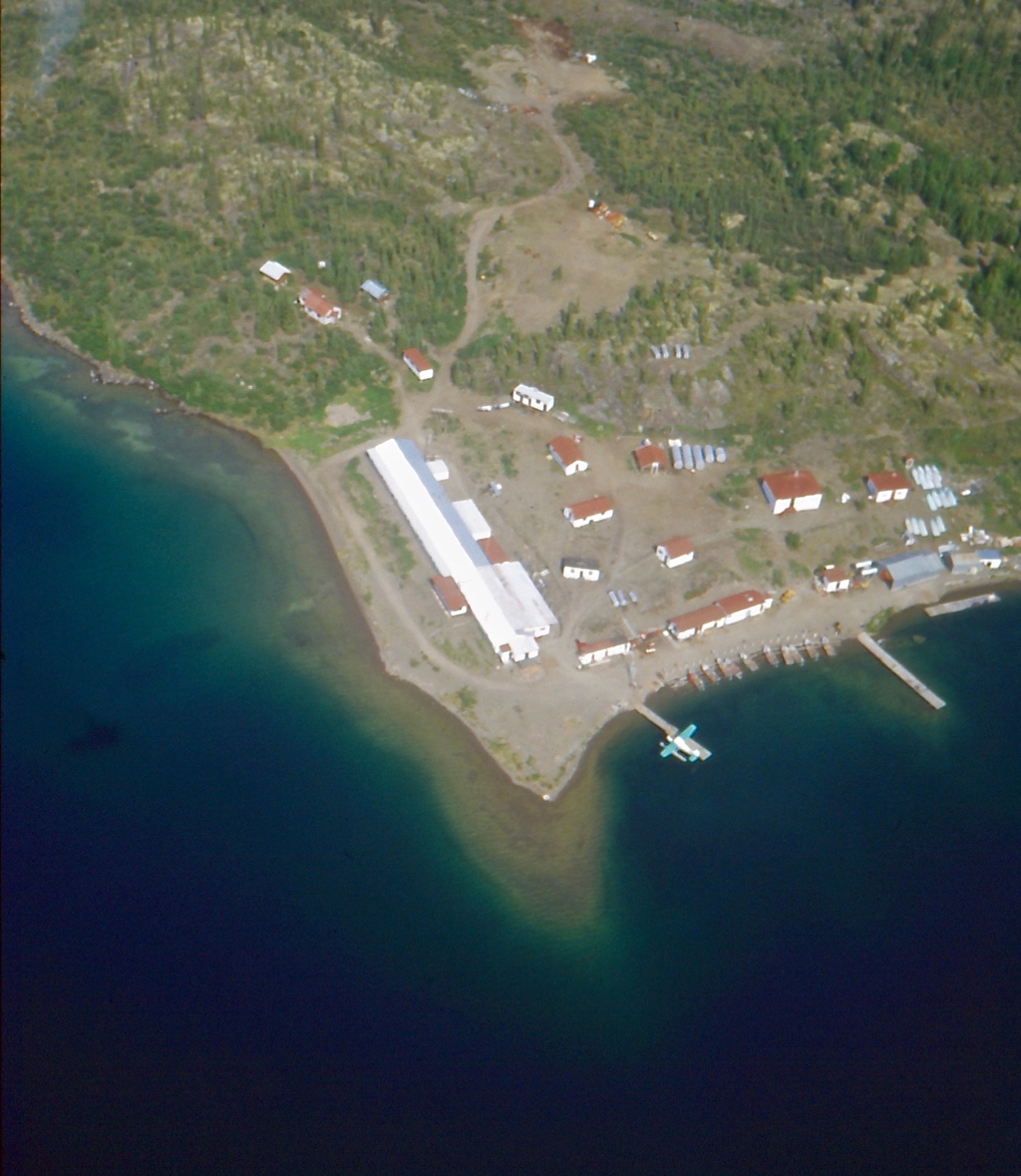
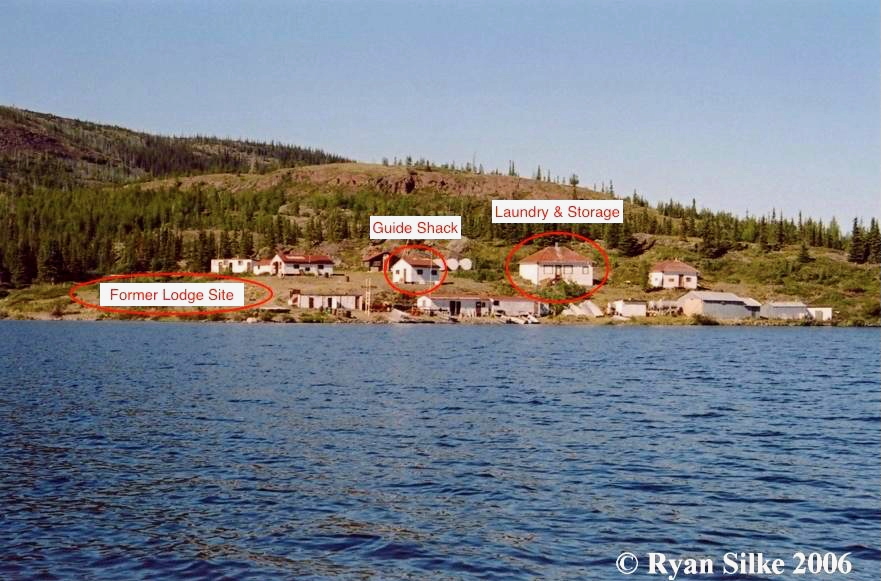
My understanding is that they were the only lodge owners to actually have title to the land, as Cameron Bay was in fact an incorporated town site at one time, meaning that parcels of land could be bought and sold.
Ernie and Mavis were outstanding owners, and their attention to detail and individual guest needs and wants, were second to none. They were always in attendance at the Toronto Sportsman’s Show throughout the 1970’s and much of the 1980’s, and so many people would visit that more room was needed to accommodate the crowds, so they rented the booth next door and set it up as a hospitality suite. Helping run things at the show was Ed Barbossa, Branson ‘s Toronto/Southern Ontario representative.
Upon arrival you were treated to a sumptuous buffet lunch and then received a comprehensive briefing from Ernie about how things operated at the lodge, including mealtimes, side trips, and even some advice regarding how to set the drag on your reel, and the most effective lures, which of course could be purchased from their well-stocked tackle shop.

He usually finished off the briefing by putting a rather serious look on his face, and then telling everyone in no uncertain terms that at the end of week he did not want to hear one single complaint, following which he would silently pause for several seconds while staring out at the audience.
Most new guests looked rather astonished at first until he smiled, and then went on to say that if anyone had an issue and waited until the end of the week to raise it, he or Marvis would have missed the opportunity to resolve it. It was definitely a “gotcha” moment.
One unique aspect of the operation was that they offered 24-hour food service, which to the best of my knowledge was the only lodge ever to do so.
At the end of the 1984 season Ernie came up with the idea to manufacture their own welded aluminum boats, that were designed specifically to comfortably handle the rigors of operating on the big lake. They had specially made containers to hold shore lunch fish, comfortable seats for both guides and guests, plenty of storage space, a flat wooden floor, and some even had ice breaking hooks welded onto the lower part of the bow, that I can tell you from experience worked very well.
The plan involved shipping up thick sheets of aluminum together with the lodge mechanic by ice road, and having him build the boats over the winter months.
Initially they were designed to be self-bailing and as such had no plug. Let me just say without going into detail, that they were once known as the “Silver Submarines.” Despite some of the early challenges they have in fact stood the test of time, as there are a number of these boats still in service – they now have plugs - both at Neiland Bay and McGill Bay.
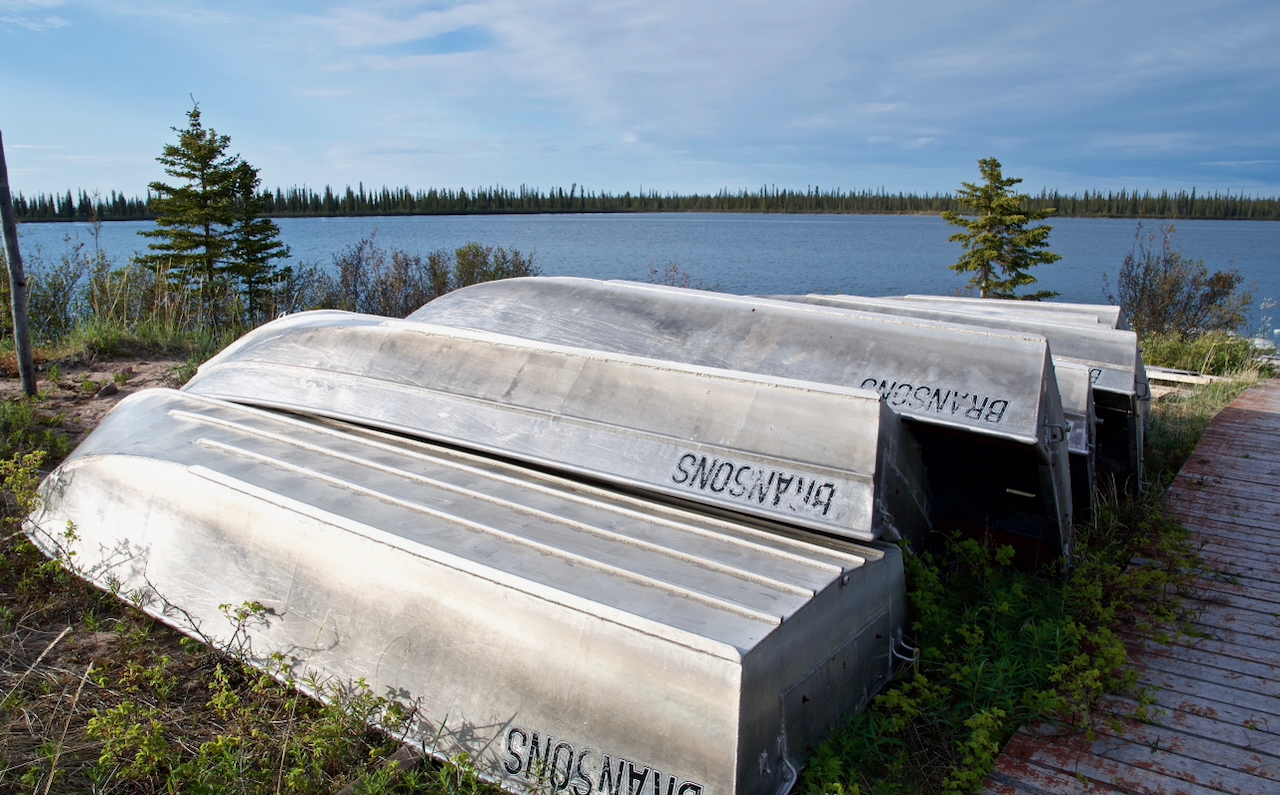
Much of the fuel that was used throughout the season, was for a time brought in by truck over an ice road, although I can recall that at least on one occasion, because the ice road was not available, Ernie had to get up there to clear off a runway on the ice, as the fuel was being brought in on Buffalo Airways DC3’s that were on skis, and fitted with bladders to hold the fuel.
During my time at Branson’s, which was from the early – ‘80’s to the early 1990’s, we could take fish home, as was no doubt the case at the other lodges. They were frozen, placed in large cardboard boxes, and then subsequently packed with dry ice.
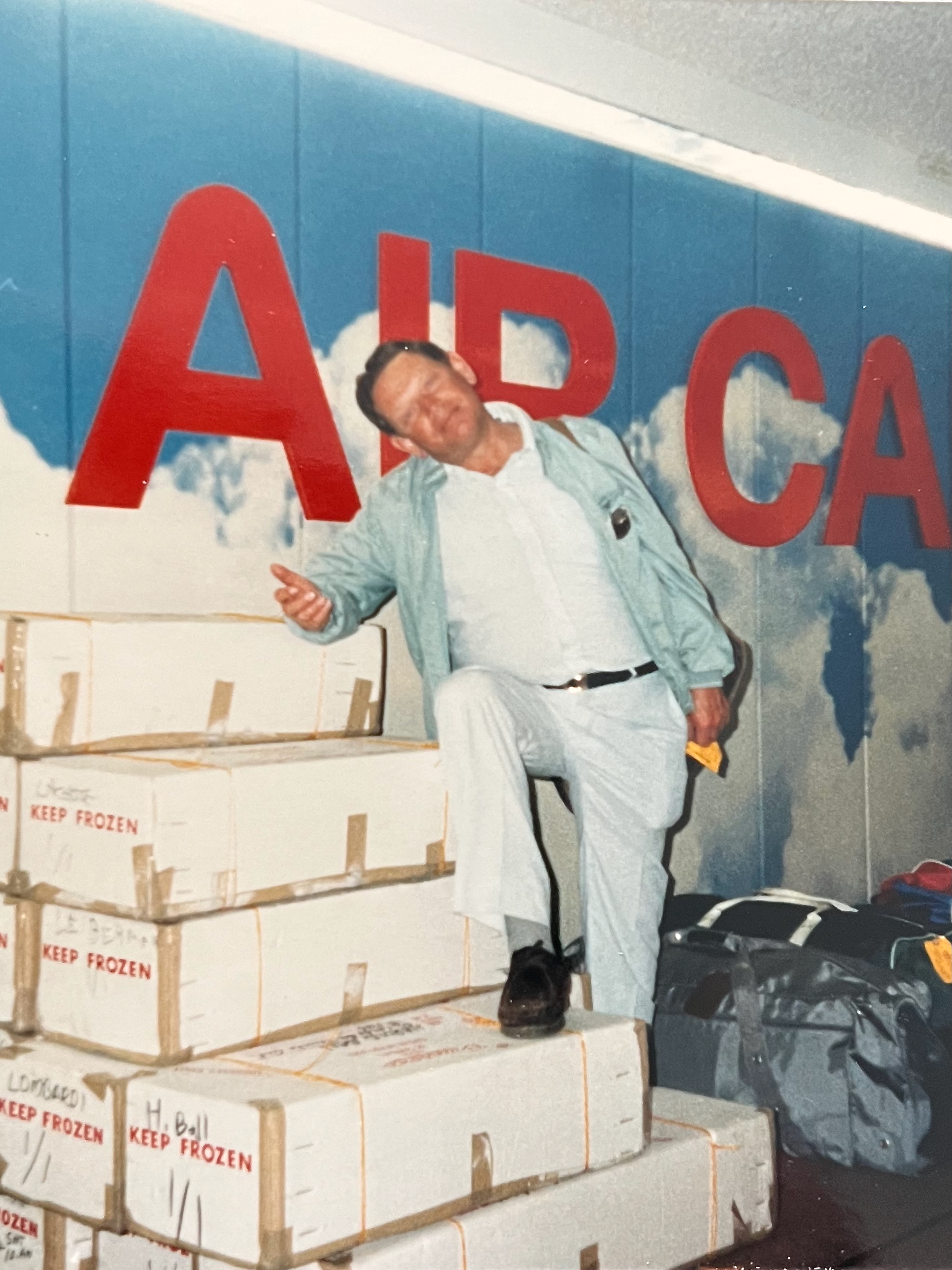
In the early days of lodge operations, you were allowed to take home numerous Trout regardless of size, and there are some videos available on YouTube, and pictures in the old brochures attached to this story that will attest to this.
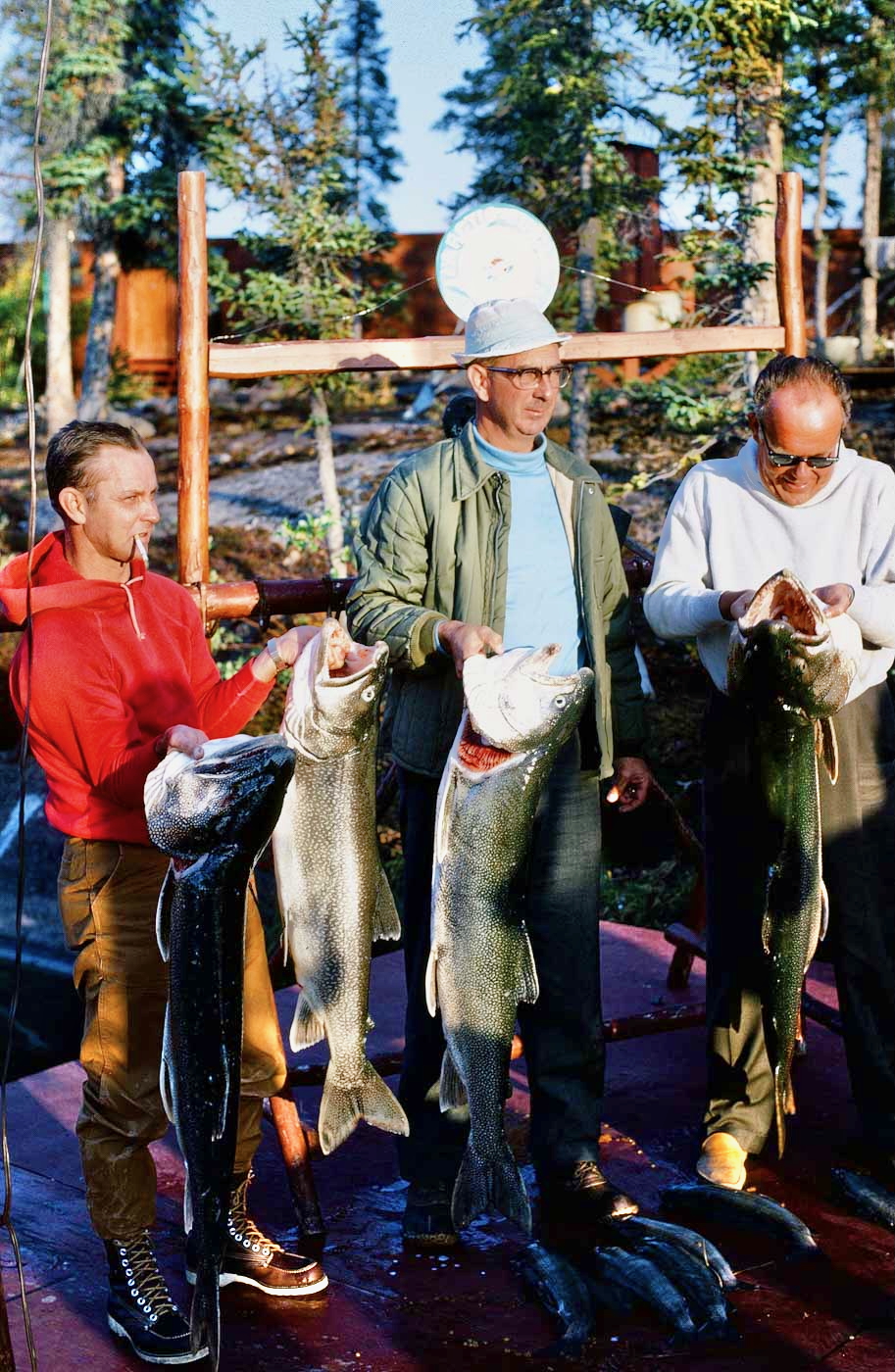

When I moved over to Trophy Lodge in 1991, guests were permitted one Lake Trout of any size, and another measuring 28” or less to take home. Grayling, Pike and Whitefish in various numbers were also available for take home.
Thankfully those days are long past, and other than a shore lunch fish, all Trout and other species, regardless of size, must be released.
In the 1980’s the Department of Fisheries and Oceans, together with the Government of the NWT, started conducting a creel census via what they called an Anglers Diary. I suspect all of the other lodges that were still operating participated as well, with each lodge being accorded their own specific “areas” on the lake.
Using these diaries, you kept track of the number of hours you fished for Lake Trout, Grayling, Pike and other species, how many of each species you caught, released, kept for shore lunch or to take home, and what area you caught them on. There was also a column designated as “other area” which I used when fishing for Char.
Interestingly, Branson’s had 4 designated areas including most of the McTavish arm, including a large piece of the “North Shore” that included Blood Creek, and what today is known as the Cove and Seagull Rock.
Surprisingly “Area 4” included much of the Smith Arm including their Katseyedie River outpost camp and Ford Bay where Trophy Lodge was located. At first, I thought that given the scope of what was designated as “Area 4”, Trophy may not have been operating at the time, and while the diaries were available during my first visit to Trophy in 1991, they may have just been leftovers from when both the program and the lodge were actually up and running.
Once you handed in your diary at the end of the week, the lodge forwarded it to the Freshwater Institute in Winnipeg, where once the data had been recorded, the diary was then returned directly to you.
At the end of the week all guests were given an attractive Branson’s Lodge collectors pin, and if you were a guest for 10 years you were presented with a gold pin. In the case of long-time guests Ed and Rodney Harback, who hailed from Harriman Tennessee, once they reached the 15-year plateau, the pin had a small diamond embedded in it.
Here is a link to a very good article, including pictures, which I think may have been written by Robert Stintsman(?) about the early days at Branson’s around the time when Ernie and Mavis took over:
https://higharc.tripod.com/index.html
They had a lodge newsletter called the “Branson’s Banner,” that was first published in 1982. Usually sent out in September, it gave a week by week account of what had happened throughout the season, what sport shows they would be attending the following year, and the results of their annual draw, where lucky guests could win anything from a rod and reel combo, to fillet knives, and lure kits.
One noteworthy story in the “Banner” from 1987, is that when Ernie and a small crew went up to Bear in May to finish off the final major rebuild of the lodge, they watched an estimated 30 to 40 thousand Caribou who, during their northern migration, strolled past just the west of the lodge over the course of many days.
Unfortunately, the lodge permanently closed around 1990/91, although many years later Plummer’s offered it as a self-guided outpost trip for a short time, similar to what is now available at Arctic Circle Lodge.
What now remains of the site, is currently owned by the Metis Development Corporation (MDC).
Arctic Circle
The lodge is located on Cornwall Island on the McTavish Arm, which is arguably the most scenic area on all of Great Bear.
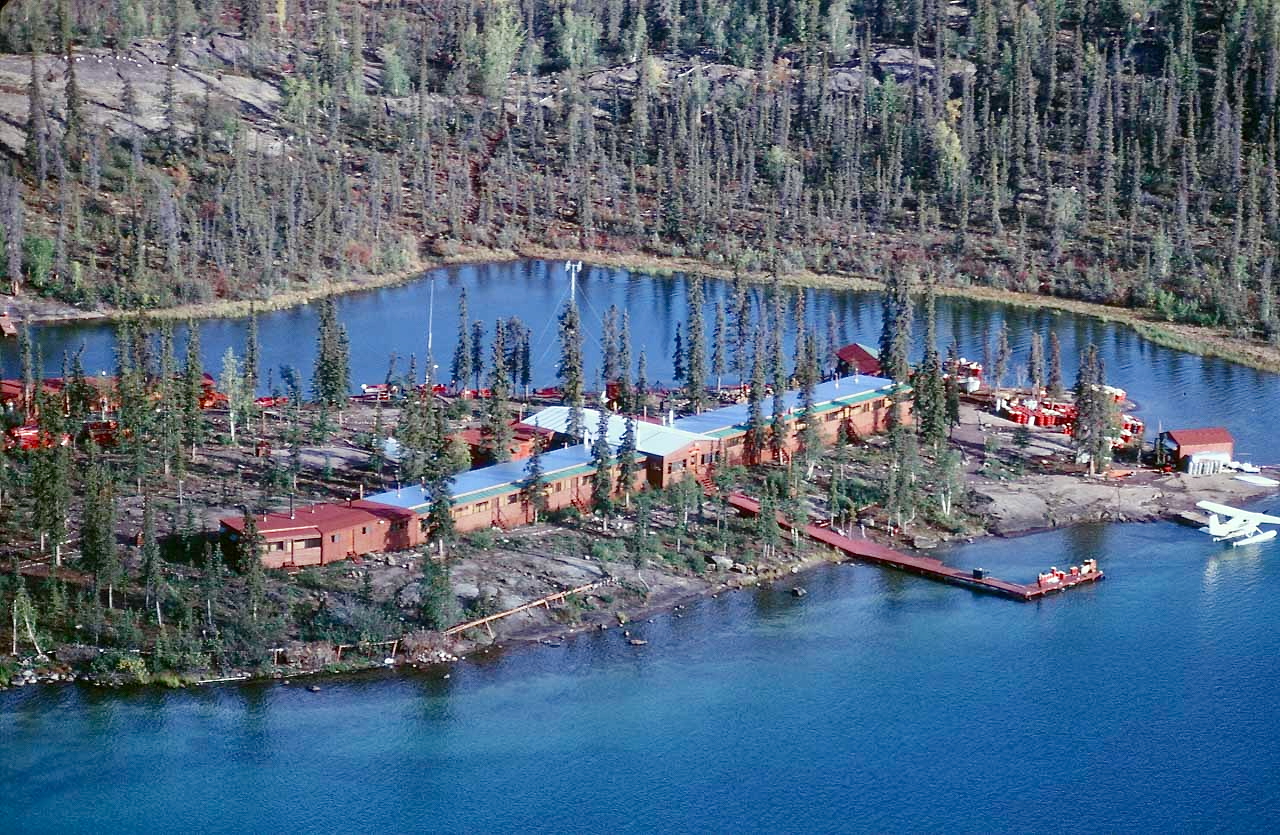
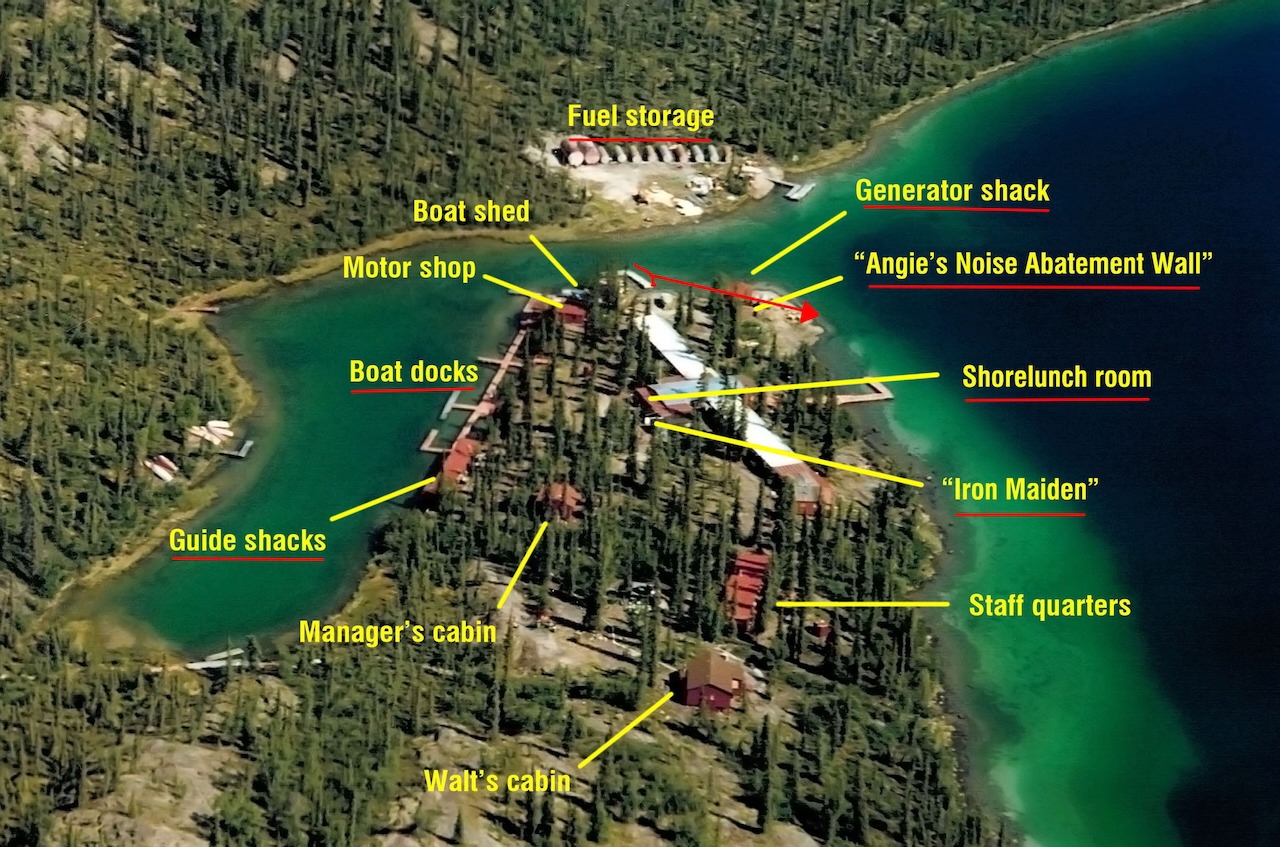
Once owned by Bill Haerr, the earliest pricing I could find was $645 pp, for what was described as an 8-day trip.
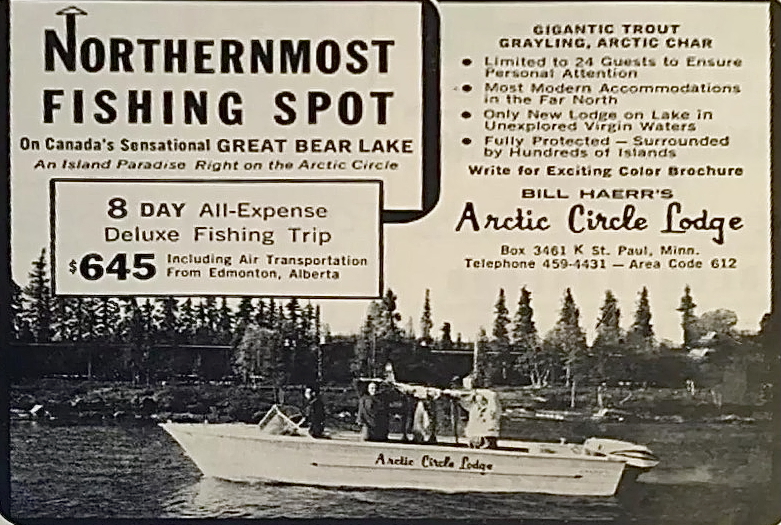
Circle may have had the most luxurious amenities of all the lodges, because they not only had a 12 foot cedar hot tub (added in 1987), and sauna (built in 1988), one of their brochures makes reference to a “luxurious honeymoon cabin,” that featured a king-size bed, His & Hers sunken 6-ft. baths, wet bar, and fieldstone fireplace, all of which could be yours for an extra fee.
The “honeymoon” cabin was insulated and outfitted with its own generator, and was used during the winter by the crew who was sent up to oversee the delivery of the upcoming seasons fuel.
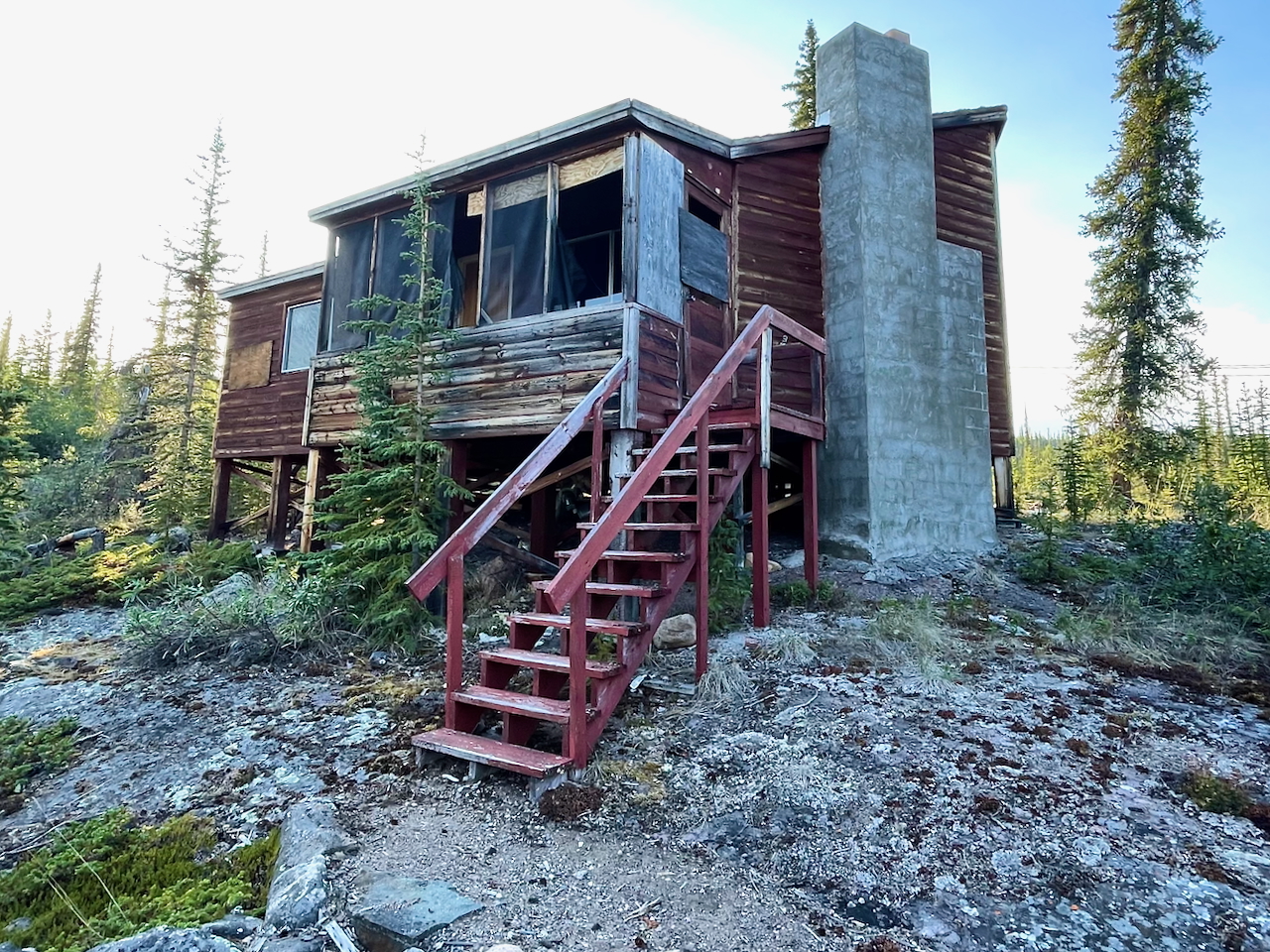
This cabin was also known as “Walts Cabin,” who from what I could gather, was a guest at the lodge throughout the 1980’s, and perhaps in the 1970’s as well. He clearly loved the place, and managed to get the green light to build the cabin, which he then let the lodge use when he was not there.
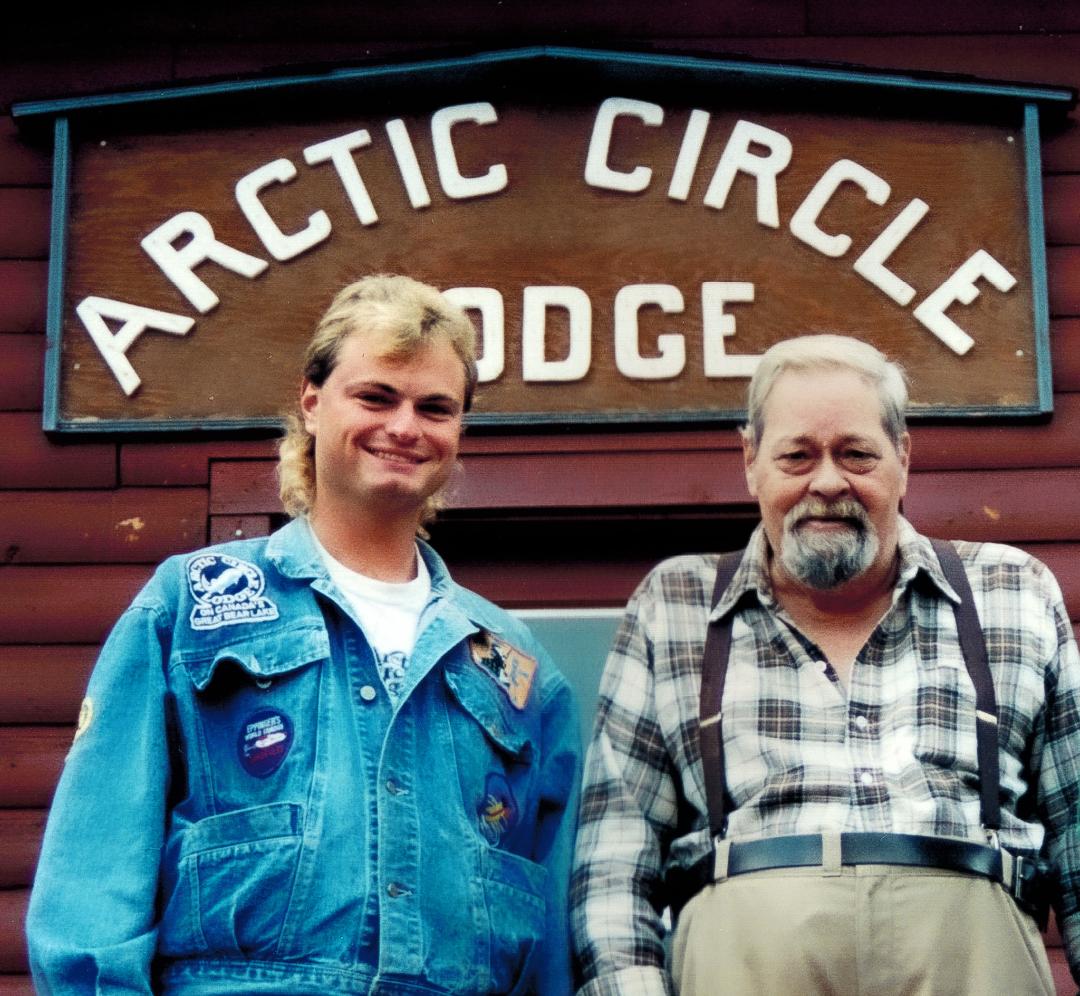
The capacity of the lodge, with every bed plus “Walt’s Cabin” occupied was 40, but I’ve been told that most of the time, guest numbers were in the mid ‘20s to low ‘30s.
In 1994, Karl and Helen Klaenhammer began renting the lodge over the summer months for their exclusive use. They had their own plane and pilot, which was a Turbo Beaver CF-OEE on amphibs, and in terms of staff, there was a manager, cook, two general service/housekeepers, and two guides. In 1997 they downsized to one guide, and then stopped using guides altogether after that. Chris Ireland was one of the guides from 1994 to 1997, and I believe that Paul Barta guided there for a time as well.
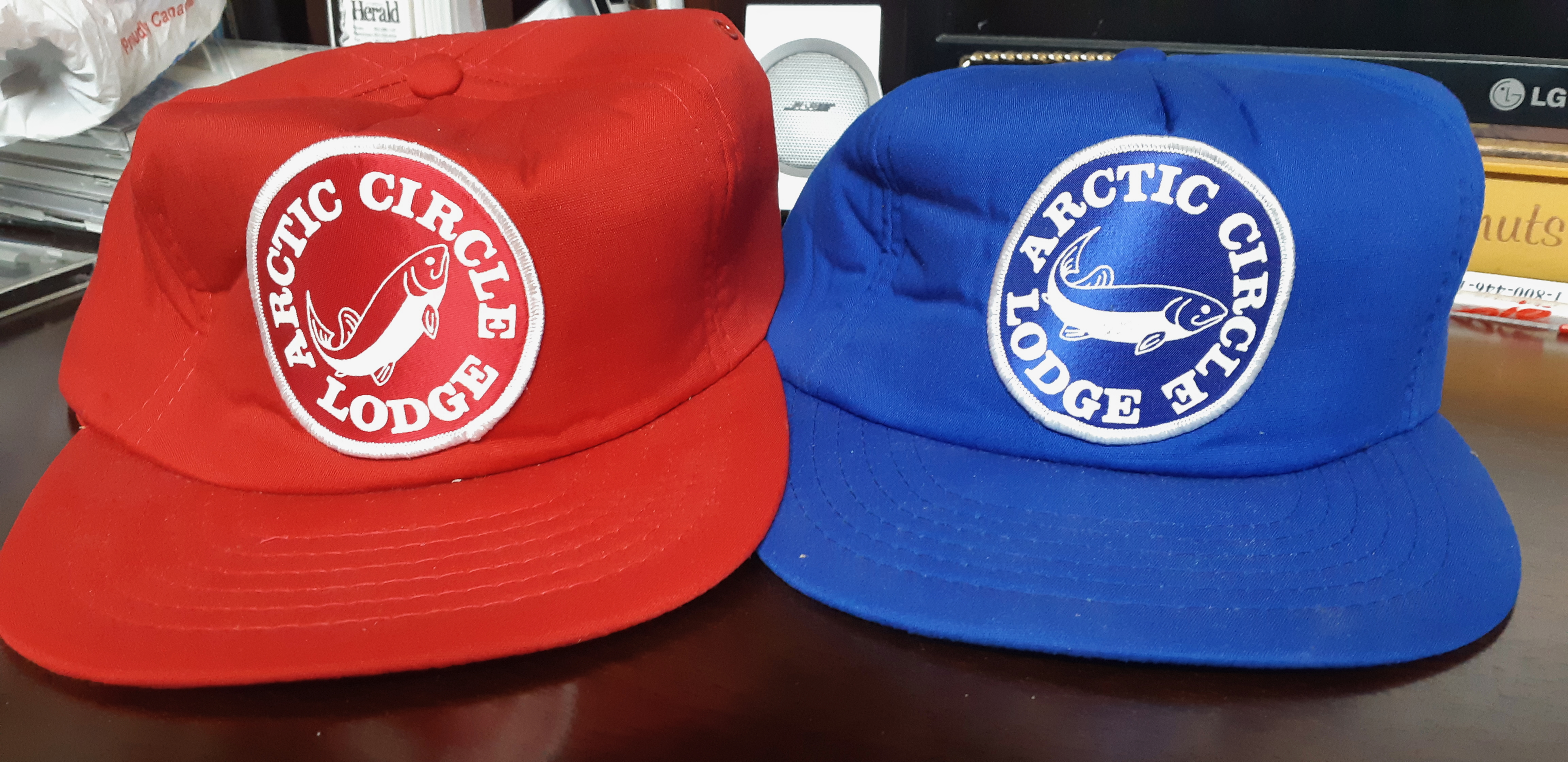
The lodge is currently owned by the MDC and is managed by Plummer’s, who is also a minority shareholder in the Corporation.
Trophy Lodge
At one time the lodge was owned and operated by Jerry Fink, who was from Ponoka, Alberta, but it’s now owned by the MDC, and managed/operated by Plummer’s.
Located in Ford Bay, not a great deal has changed in regards to the interior of the lodge since it was first built, as many of the light fixtures and at least some of the furniture, appears to be vintage Trophy Lodge. And while much of the interior looks as if it has been frozen in time, the exterior was upgraded with new siding in 1995, and a new metal roof was also installed at some point as well.


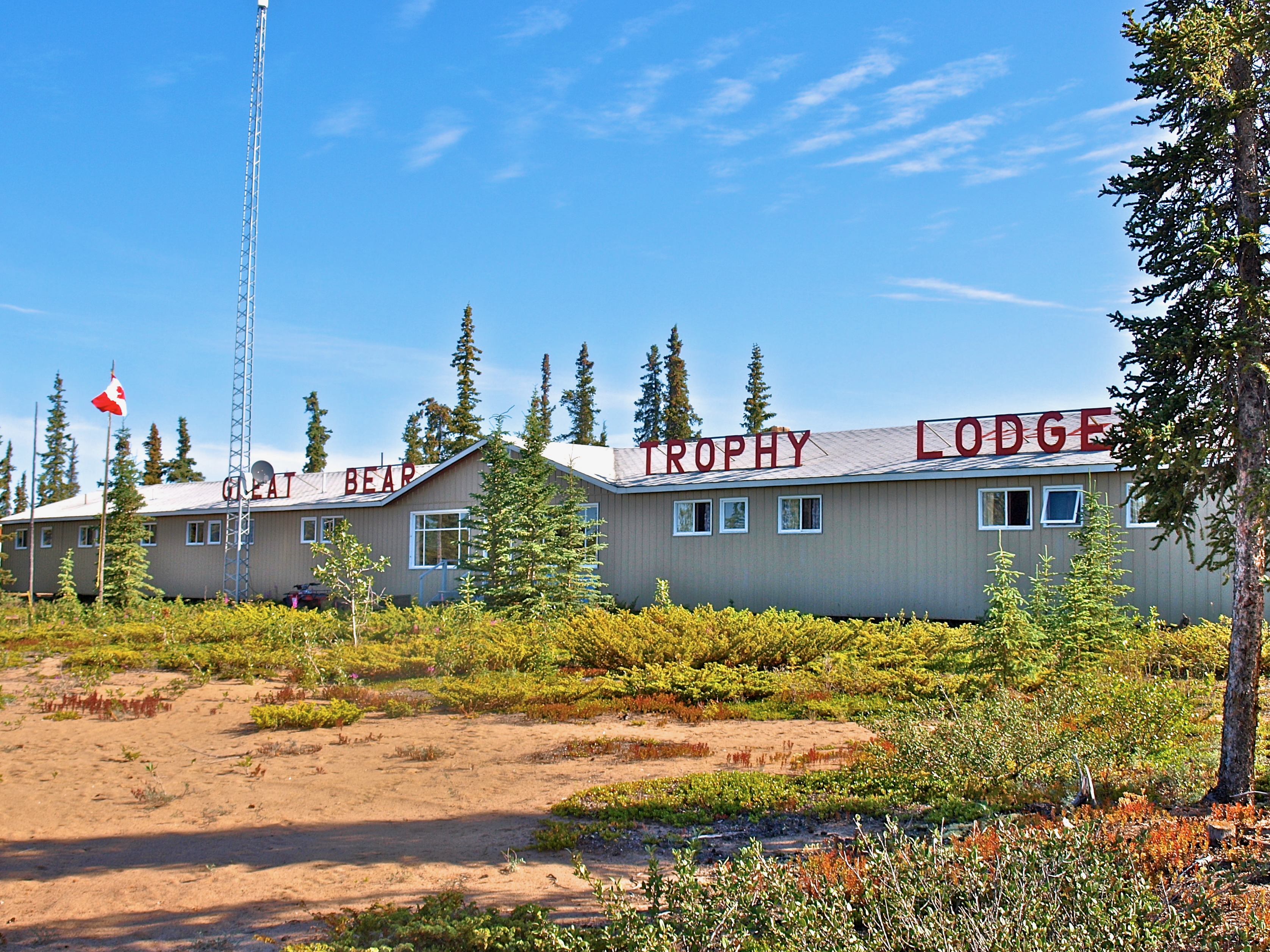
A couple of metal silos were erected, and subsequently modified to make them bear proof, which are used to store all manner of things once the lodge shuts down for the season.
Not unlike Thursday evenings at Plummer’s Great Bear Lake Lodge, the chef would go off menu and prepare a delicious buffet dinner, with wine and Bloody Caesars being provided to wash everything down with. At one time they even served up a flambéed Baked Alaska for dessert on the last evening of the trip.
Our guides were available to us for 10 hours per day, and if you wanted to fish after dinner, you could negotiate an overtime rate directly with your guide.
One unique aspect of the Smith Arm where Trophy is located, is that in addition to exceptional Lake Trout fishing, it offers the best Pike and Grayling fishing on the entire lake.
Although my memory is somewhat fuzzy on the matter, I believe that a trip cost around $2600 in 1991, and while I don’t have any earlier pricing information, I believe it would be reasonable to assume that over the years, the rates would be similar to what the other lodges were charging at any given time.
Regrettably I don’t have very much material about the lodge pre -1991, which is when I first visited after Branson’s closed, so if anyone can provide any information about lodge operations, pricing, people etc. pre ‘91, please let me know.
Great Bear Lodge
It was originally owned and operated by Arctic Enterprises Ltd, which was comprised of 1 Canadian and 3 gentlemen from South Dakota.
Their business address was in Sioux Falls South Dakota, and to make a reservation or get some additional information you could either write, or make a person to person call to – and I’m not making this up – Bill Trout!
During a chat that Chris Ireland once had with Warren Plummer, he referred to the lodge as the “doctor’s lodge”, so speculation is that it may have been owned by a group of doctors at one time. It was also referred to by some as Bear Island Lodge.
In the late 1980s, up until the time it went bankrupt, it was owned by Rob Miller who apparently also owned a racquet club and an optical shop in Yellowknife.
While I don’t have the date on which they first started taking guests, I’m presuming that it was in the mid 60’s, as the movie that I refer to below, was apparently shot in 1965.
Like Branson’s, Trophy and Arctic Circle, the lodge was set up “motel style,” with guest rooms, lounge and dinning room being under one roof. Guests at Plummer’s current location stay in individual cabins, with the lounge/dining room and tackle shop being in separate buildings.
The earliest pricing I could find was $645 pp, for a week’s fishing.


Here is the link to an early promotional video about the lodge:
Initially shot in the early 1960’s on 16mm film, this 27 minute promotional movie came to GBLO courtesy of Lori Volp - Director, Knowledge & Insights Dairy Management Inc. - National Dairy Council; American Dairy Association.
How it came to be in the possession of the National Dairy Council I really don’t know for sure – not a lot of cows up Great Bear Lake way - but the speculation is, that it may have been sent to the Council for the purpose of promoting the lodge as an executive retreat.
The price for an 8-day trip at the time this movie was made was $795 per person, with a deposit of $100 required to secure your reservation.
And what did you get for your $795?
According to the brochure available at the time, your trip included:
• 1900-mile Charter Flight
• Delicious Food
• Modern Facilities
• Safe Boats
• Evinrude Motors
• Trained Guides
• Microwave Telephone Service
• Wall to wall carpeting
• Central forced air heating
• Bar and Recreational Room
• Walk – in freezer
• 7000 ft. Runway
• Native Store – handicrafts and personal effects
• 3 – 25,000-Watt Diesel Generators
Grey Goose Lodge
The lodge is located in the community of Délı̨nę on the Keith Arm, not far from the headwaters of the Great Bear River.
Operating year round, it is designed to accommodate smaller groups, and offers a wide variety of activities including guided excursions such as ice & sport fishing, ATV adventures, interpretive tours, and cultural interaction.
For more information about the lodge click on the following link:
https://spectacularnwt.com/accommodations/grey-goose-lodge/
A Rough Go of It
During the 1990/91 offseason several of the lodges ran into financial difficulties and suddenly closed, including Branson’s and Great Bear Lodge, leaving many guests bookings, and their deposits, in limbo.
Over the winter, an agreement was made between any interested parties from Great Bear Lodge and Arctic Circle, to put all guests through Circle in the summer of 1990. Despite this, on August 4 of that year, Arctic Circle shut down, following which neither of them ever operated as independent lodges again.
The NWT Government eventually stepped in, and offered those impacted by the closures, trips to other lodges during the 1991 season. These lodges included Trophy Lodge (then being run by Plummer’s), Plummer’s Great Bear and Great Slave Lodges, and one or two others that I can’t recall.
In 2007 through 2010, when the US subprime mortgage crisis was in full swing, Plummer’s Great Bear Lodge bookings down by about 40% in 2009, and Trophy did not operate at all that year.
Yet another challenge was the Iraq war that had started in 1990. This caused a significant spike in fuel prices, which even prior to that, spiralling fuel costs was an issue for the lodges.
And then of course more recently, there were the COVID years…
Outpost Camps
All but one of the lodges once had “permanent” outpost camps both on the lake, and in some cases on various rivers which flowed into the Arctic Ocean, where guests could fish for Arctic Char, and in some instances Inconnu.
Branson’s
They had an outpost on the Smith Arm located near the Katseyedie River, and others on the Kugaryuak River and Hottah Lake.

One of the first manager/cooks at the Katseyedie was Oscar Lee, who had a sign on the cook house welcoming guests to “Oscar’s Eatery.”
In the late 70’s the camp manager/cook at Katseyedie, was the infamous Arnold, whose cook house was affectionally referred to by many as: “Arnold’s Grease City”. Dr. Bob “Rezzy” Resnick even brought up a sign to that effect, which he attached to the outer wall of the cook house.
His preferred, or as some might say only method of cooking was to fry virtually everything, and to best illustrate this, I just happened to be there when a guest had the affrontery to ask him for poached eggs one morning at breakfast. Arnold didn’t miss a beat, and informed the guest that he would poach them when he was finished frying them!
Mavis even sent over an aluminum egg poaching pan, which not surprisingly, disappeared under not so suspicious circumstances.
Jarvis Grey and his wife Sydney also ran it for a while, as did Eydie and Paul Reynolds for one season.
There was a reference to “Branson’s Victoria Island Char Camp” in the early brochures, although I don’t know where on the Island it was located, or if it was in any way connected with High Arctic Lodge, which was once owned and operated by Don Hamilton.
Great Bear Lodge
Their outpost was in Neiland Bay on the McVicar Arm, which was not all that far from the main lodge. And while it’s only a guess on my part, anglers staying at Neiland (now owned by the MDC) may have even ventured as far west as the Keith Arm from time to time.
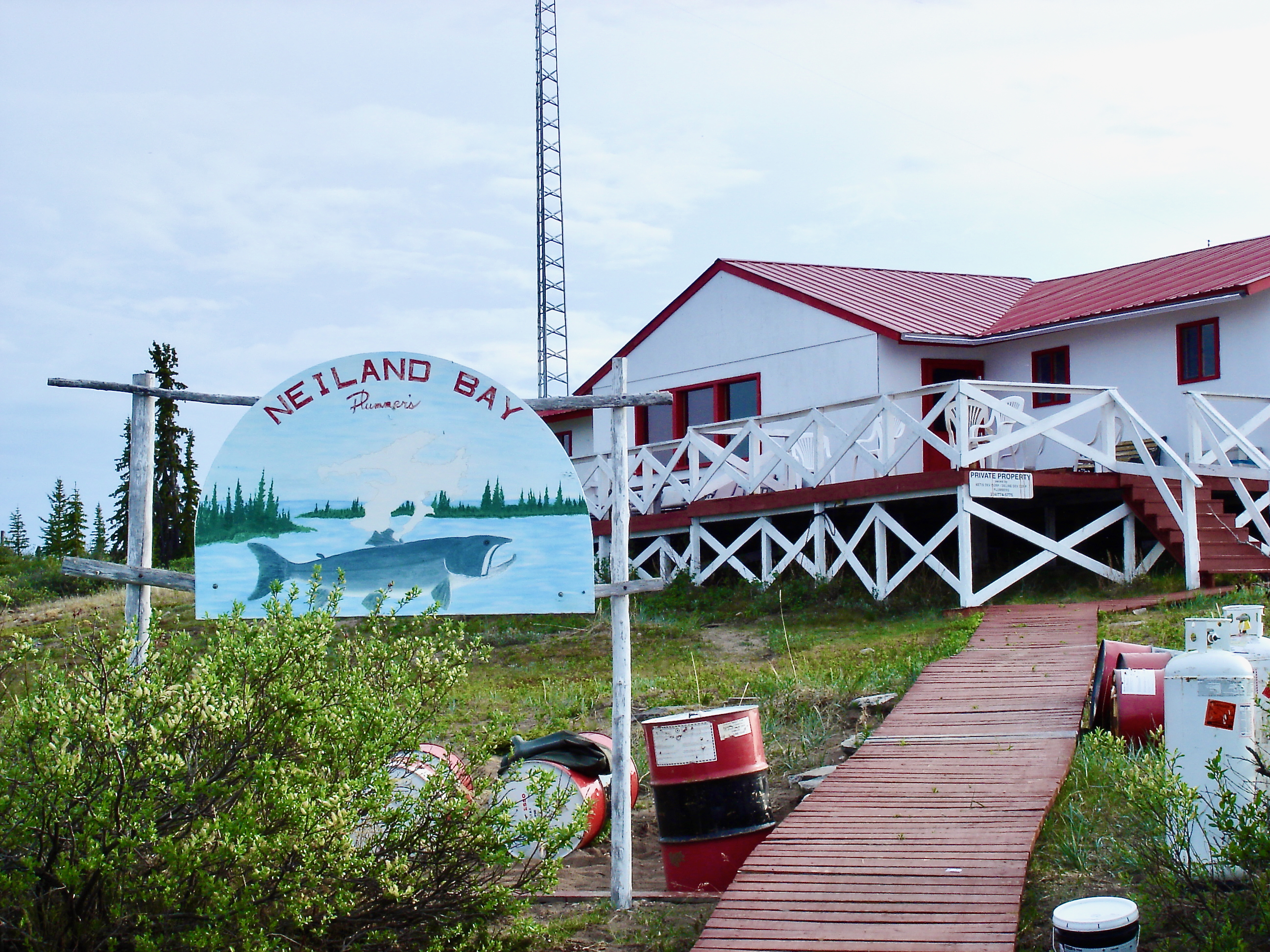
Arctic Circle
They had two outpost camps on the Coppermine River, with one being located just above the Melville River, and the other further downstream near the Kendall River. There was also a third camp on Victoria Island, called the Char Lake Outpost Camp.
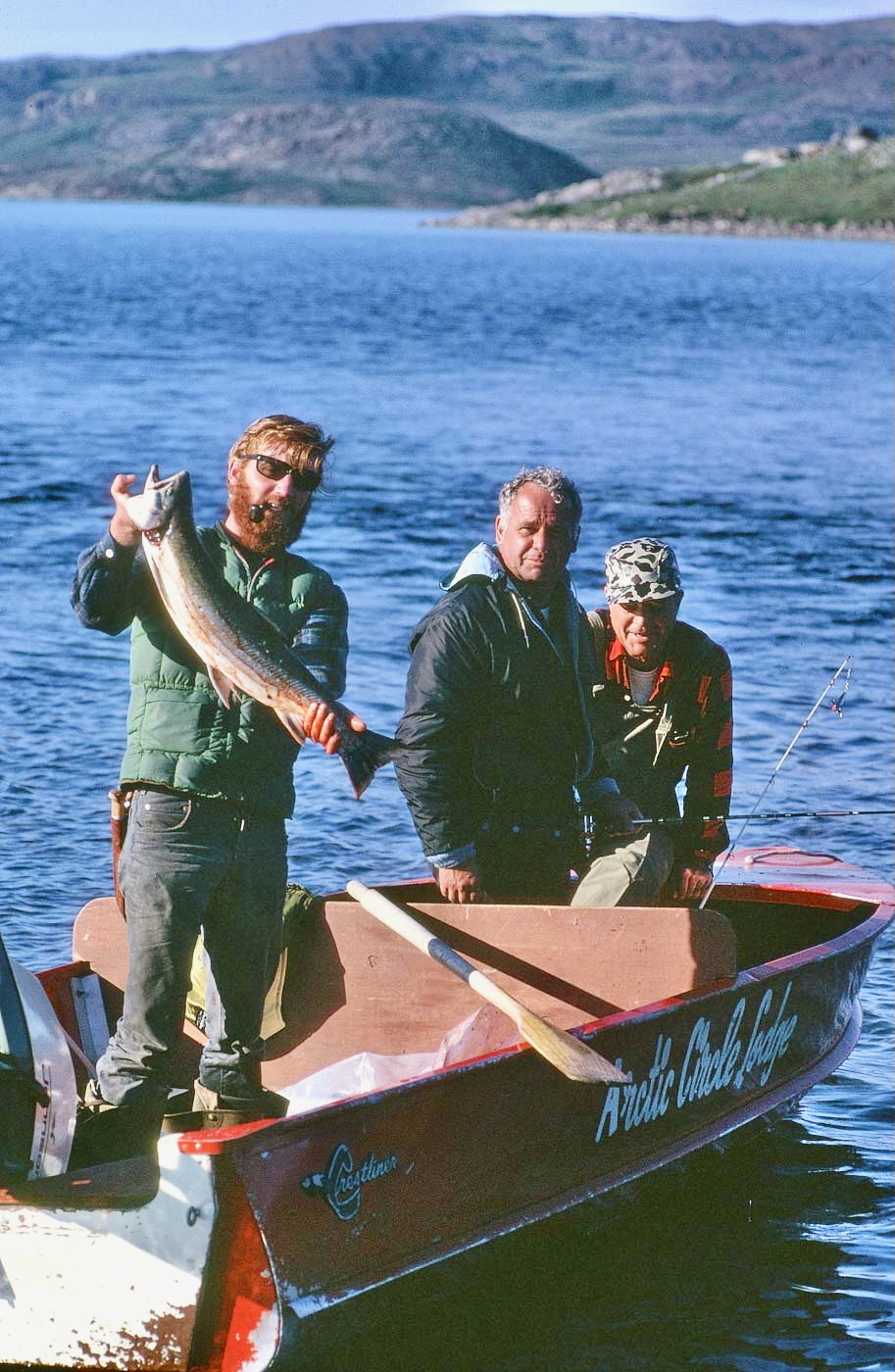
Their fourth outpost camp was in the bay known as the Cove, and was located on the west side of the narrows as you enter the bay. The camp was comprised of canvass/wood framed tent like structures, that were similar to what was being used at Branson’s Katseyedie Outpost, and Plummer’s Tree River Camp.
Plummer’s
They have an outpost camp on the Tree River which continues in operation to this day.

In addition, they currently operate Arctic Circle as an outpost camp, and once operated Nieland Bay and Branson’s as outposts. While guides were provided at Neiland, Arctic Circle is, and Branson’s was self-guided, although in all three locations a camp manager/cook was/is provided.
If they had any others throughout the years, I’m not aware of where they may have been located, although I’ve been told that there was some discussion about setting up an outpost camp in the Inlet around 1993. While I don’t know if that actually came to fruition, it is nevertheless currently on offer as day trip fly -out.
Trophy
They once operated outpost camps both in Good Hope Bay and on Ikanyo Island.
There was a wooden cabin at Good Hope, while on Ikanyo, as far as I can tell, they used tents. I don’t know if either site had a camp manager/cook.

Side Trips/Fly Outs
At one time or another, most of the lodges had aircraft available to take people on various side trips. In addition most had large cabin cruiser type boats with large motors that could transport numerous guests significant distances quickly, and in relative comfort.
Branson’s Lodge
They offered day trips to White Eagle Falls on the Camsell River for Grayling, Gunbarrel Inlet, Action Alley, the “North Shore” including Blood Creek, and an area known as Cariboo Beach, Hottah Lake, Bloody Fall on the Coppermine, and the Kugaryuak River for Char.
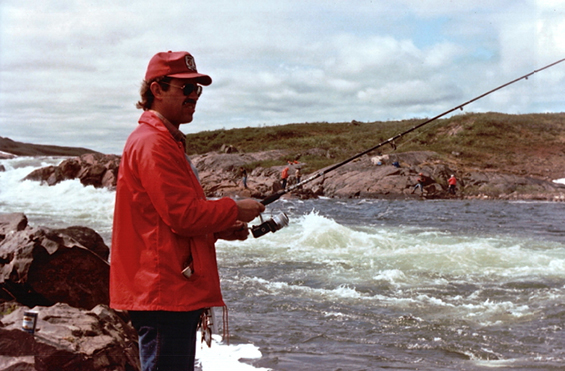
While not listed as an “official” fly out, if all the stars and planets were in alignment, Ernie might arrange for you to be flown over to the Johnny Hoe River for some Walleye fishing. Pike and Grayling were also ripe for the picking in the river. The drop off point on the river was actually not too far drown stream from Lac St. Therese, the source of the Johnny Hoe.
There we also some reefs at the mouth of the river, with the rather interesting name of “Foul Ground,” where apparently there was, and probably still is, some very good Lake Trout fishing available.
Plans were in the making to offer the Johnny Hoe as a regular fly out at one point, but the story is that the Zodiacs he cached there at the end of one season took on a bear, and didn’t fare very well – so that put paid to that particular plan.
He also mentioned that they were giving some thought to offering trips to, and perhaps even establishing an outpost camp on Takijuq Lake, which is a large lake located just over 200km south/west of the lodge, in what is now Nunavut. And while it may have been “test” fished at one time; the idea never came to fruition as far as I’m aware.
And then there was Contact Lake. This 10 mile long lake was located a short distance just south of the lodge. It once boasted an active silver mine, which you could poke around in when not fishing.
We did fly into Contact Lake for a day, but it never became a regular fly-out, because to be honest, the fishing was not all that good. Initially Ernie had an inflatable cached there, but did bring in some aluminum boats, likely by hauling them along the road to the mine, that came all the way down to Bay 66.
Although initially advertised as day trips, they eventually built permanent structures on both Hottah, and at the Kugaryuak, so guests could overnight if they were so inclined. In fact the first time I went to Hottah, we stayed in tents.
Visits to the community of Kugluktuk, or Coppermine as it was called back then, and flights across the Barrens where, with a bit of luck, guests might see Muskoxen, Cariboo and/or Barren Ground Grizzly Bears were also available.
Branson’s cabin cruiser style boat was called the “Ark,” and if I recall correctly, it could take up to 8 guests. When booking a trip to say Gunbarrel, the Inlet, or the “North Shore”, your guides would be sent out an hour or so before you left, and meet up with you upon arrival.
Trophy Lodge
Fly outs were available to MacIntosh Bay, Ekka Island, the Coppermine for Arctic Char, Lac Du Bois, Katseyedie River, Good Hope and Deerpass Bays, the Horton River where you could fish for Inconnu, and Colville Lake of Bern Will Brown Fame:
https://www.nwtexhibits.ca/bwb/biography.html
When I was going to Trophy, Char trips were limited to the Coppermine around the “Big Bend” area. One of the old brochures does indicate that at one time they fished more than one river, but I don’t have any information as to what the other river(s) may have been.
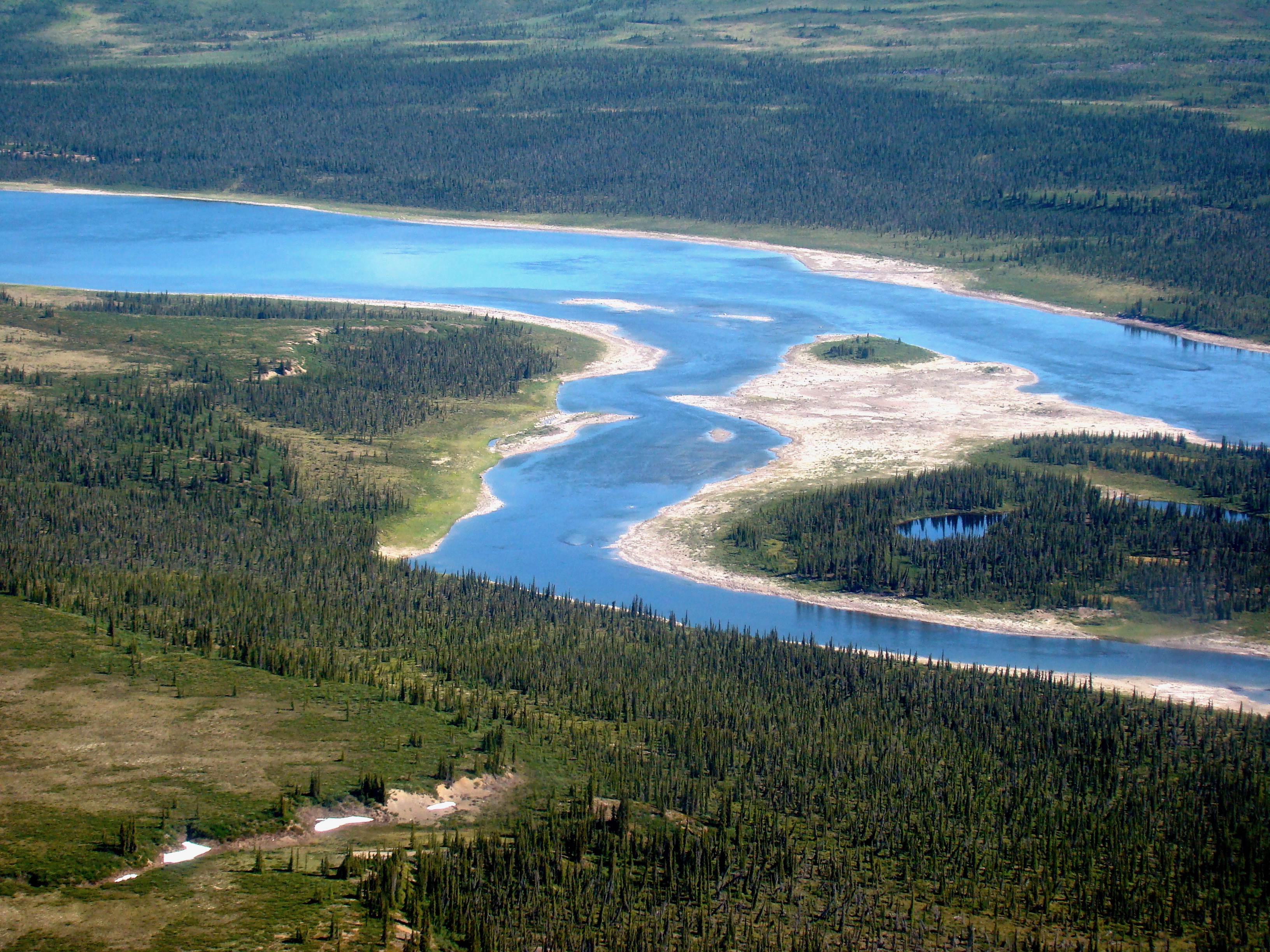
Visits to “local” communities were also on offer - most likely Kugluktuk – as were wildlife viewing excursions.
While I’m unable to confirm it, there is an old cabin cruiser style boat rotting away on shore, that may very well have been used to transport guests at one time.
Side trips in the 1980’s cost between $150, and $450 pp.
Trophy no longer has a float plane in residence.
Arctic Circle
They offered side trips for Char on the Coppermine and Victoria Island, the Cove for Lake Trout, and to Kugluktuk.
They also had a 17-foot cruiser with 115HP outboard; and a 20-foot Lund with 200HP motor for moving guests around the lake, and would be used to take them to places like Seagull Rock, the Inlet, or anywhere else that was within reasonable driving distance.
Great Bear Lodge
Day trips to Hottah Lake were on offer, as were fly outs to local villages, which most likely were Délı̨nę, and/or Kugluktuk.
Char trips were also available, but I don’t know what river(s) they fished, although the Coppermine is probably a good bet. The also offered their guests a flyout to the Johnny Hoe River, where they could fish for Walleye, Pike, and Grayling.
One of the early brochures made reference to “new accommodations” being available for Char fishermen, which may or may not have meant that a longer stay was possible.
In addition, you could also book a wildlife viewing fly out.
Plummer’s
Currently they offer day trip fly outs to Shipwreck, the Inlet, Cove, Hornby Bay, Seagull Rock, Action Alley, the Sulky River, McGill Bay, Clearwater Bay, and the Horton, Coppermine, and Tree Rivers.
Once Trophy stopped offering side trips, a fly out to the Katseyedie, which was the site of the old Branson’s outpost, became available for a time. Overnighting was also an option, as the original outpost cookhouse was still standing, and had even undergone a few repairs/upgrades.
From their original location, for $62 pp you could fly up to the Coppermine, or if you were staying at their Great Slave Lake Lodge, it cost $100 pp for a side trip to Great Bear. Also available from Great Slave, was a side trip to Coppermine, with a stop at Bear. The price was $148 pp., and if you decided to overnight at Bear, accommodation was on offer for $10 pp, per night.
Not surprisingly, it’s now a bit more expensive to take a side trip, as the following picture of the trip board that I took in 2018 will attest to.
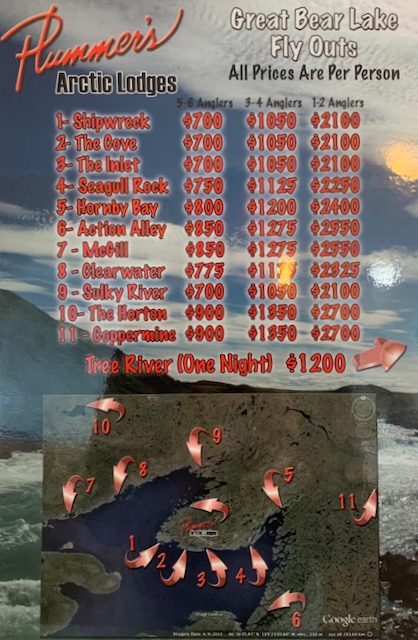
At their first lodge, they also had a twin engine cruiser that was used to transport guests the 10 miles from the strip at Sawmill Bay, to the lodge, and which also may have been used for side trips as well.
Getting There and Elsewhere
Plummer’s
Initially they flew their clients from Winnipeg to Bear on DC4, but if there were 16 guests or less, a DC3 was used. Landing at Sawmill Bay, guests were then transported to the lodge either on a Grumman Goose, which was based at the lodge and used for fly-outs, or by twin engine cabin cruiser.

Once the lodge moved to the Dease Arm, my earliest memories were flying from Winnipeg to the lodge on either a Canadian North, or First Air 737, with stops along the way at YK, and their lodge on Great Slave Lake. On one occasion in the ‘90’s we came in on a First Air 727.
On those flights, both inbound and outbound, no expense was spared on the food and drink that we were served, which included menu items such as smoked Arctic Char, steak and eggs, and Mimosas. In comparative terms, it was the equivalent of what you would expect when flying Business Class.
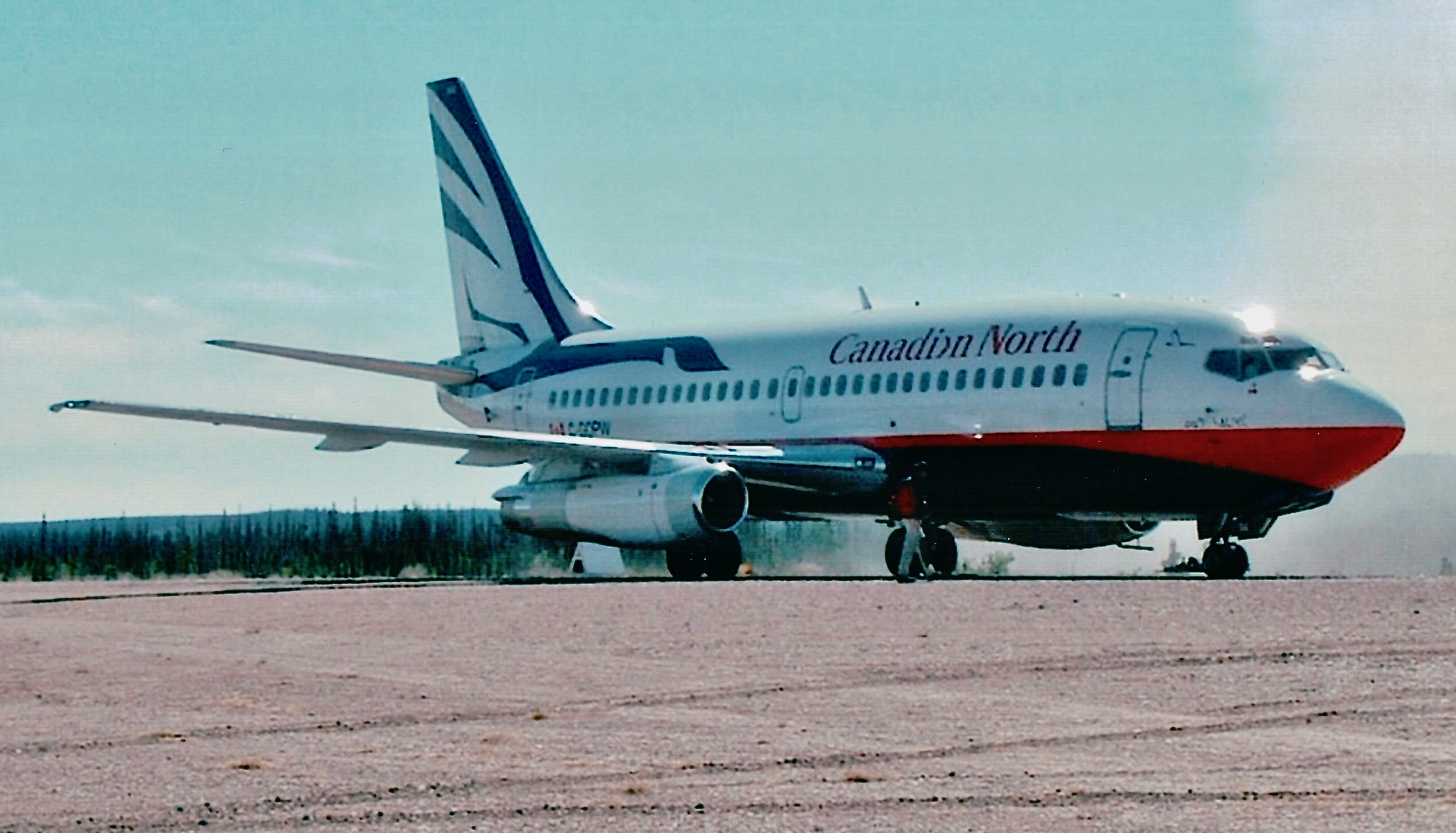

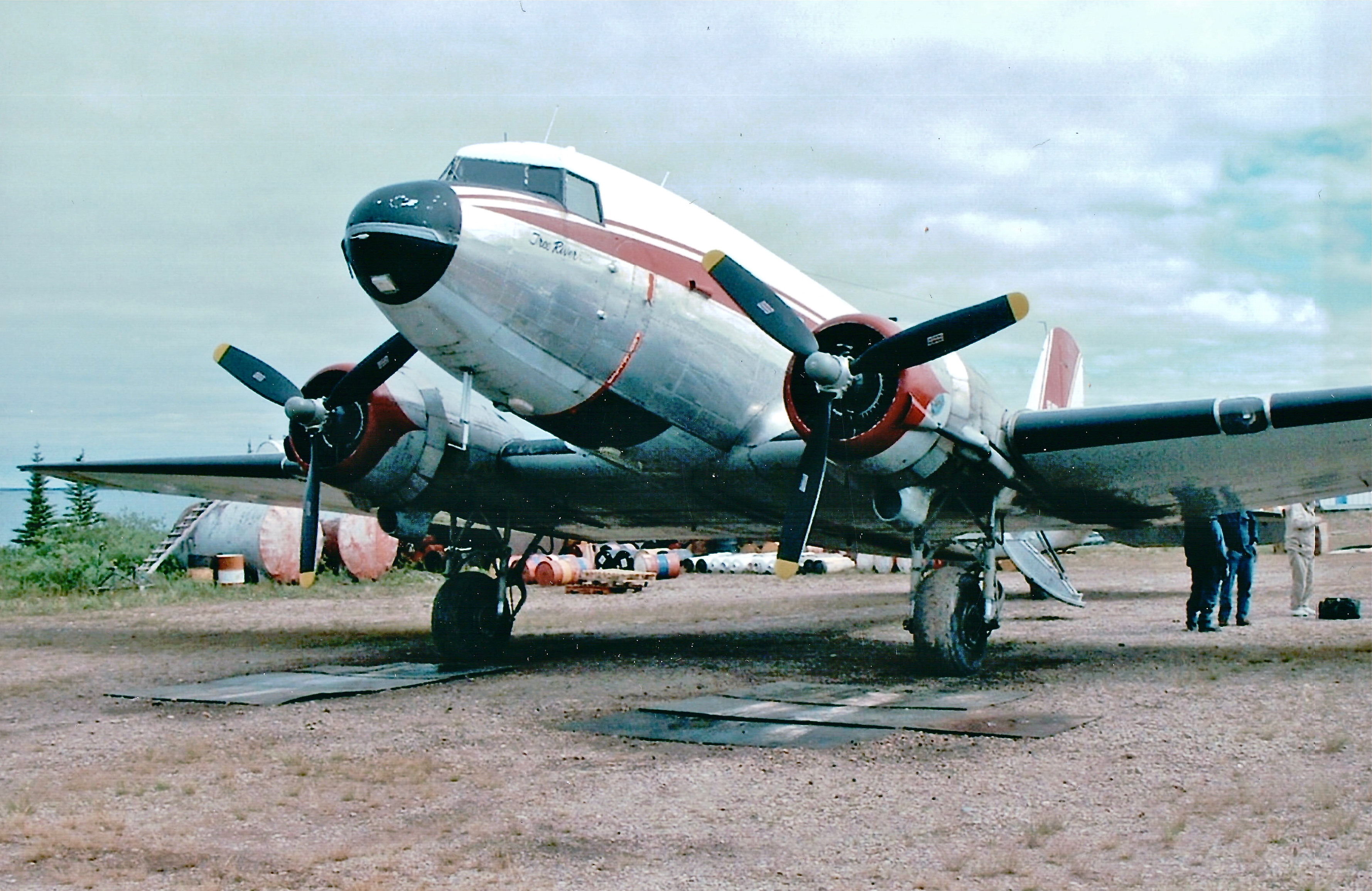
I believe it was in 2009, that the starting point for trips moved from Winnipeg to Yellowknife, with ATR aircraft operated by Summit Air being used to move guests, and supplies from YK to the stirp at Bear.
The lodge is located on an island, so once you touch down, it’s a short walk down to a dock, where boats are waiting to take you over to the lodge.
Two Turbine Otters are now permanently stationed at the lodge, and are used to take guests on various side trips, including to the Tree River Camp.
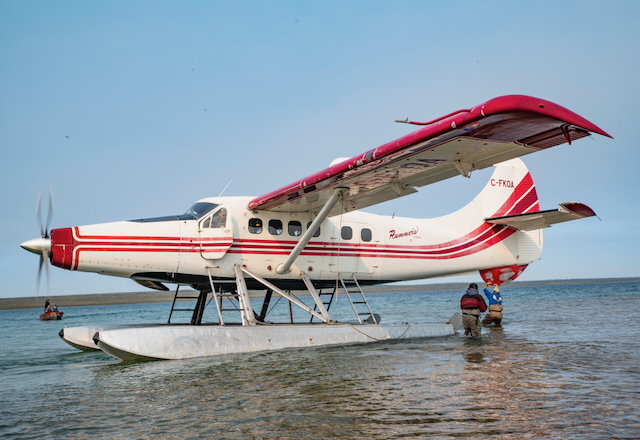
For more information on Plummer’s legendary aviation history, click on:
https://www.plummerslodges.com/wp-content/uploads/2023/03/Artic-Lure-2020-12-14.pdf
Branson’s
To the best of my knowledge trips always began in Edmonton.
While they originally used the strip at Sawmill Bay, once they switched over to Port Radium, Pacific Western Airlines was used for a time to fly in guests on what may have been a DC4.
On my inaugural trip, I flew up from the Edmonton Municipal Airport (now closed) in a Convair 440, operated by North Cariboo. In subsequent years, we flew up in a North Cariboo Convair 640, a Lockheed Electra (we switched over to Buffalo Airways DC 3’s in YK), and in 1987, a Time Air Dash 7, which rumour had it was the furthest north a Dash 7 had flown to that point.
They did eventually enter the jet age in 1988, when they started flying guests in on a Time Air F28.
When staying at the Edmonton Inn, which was only a stone’s throw from the Municipal Airport, you would be met by Branson’s expediter, who would fill you in on the morning flight time, take care of your luggage, and host a evening meet and greet, where you had a chance to get to know your fellow anglers.
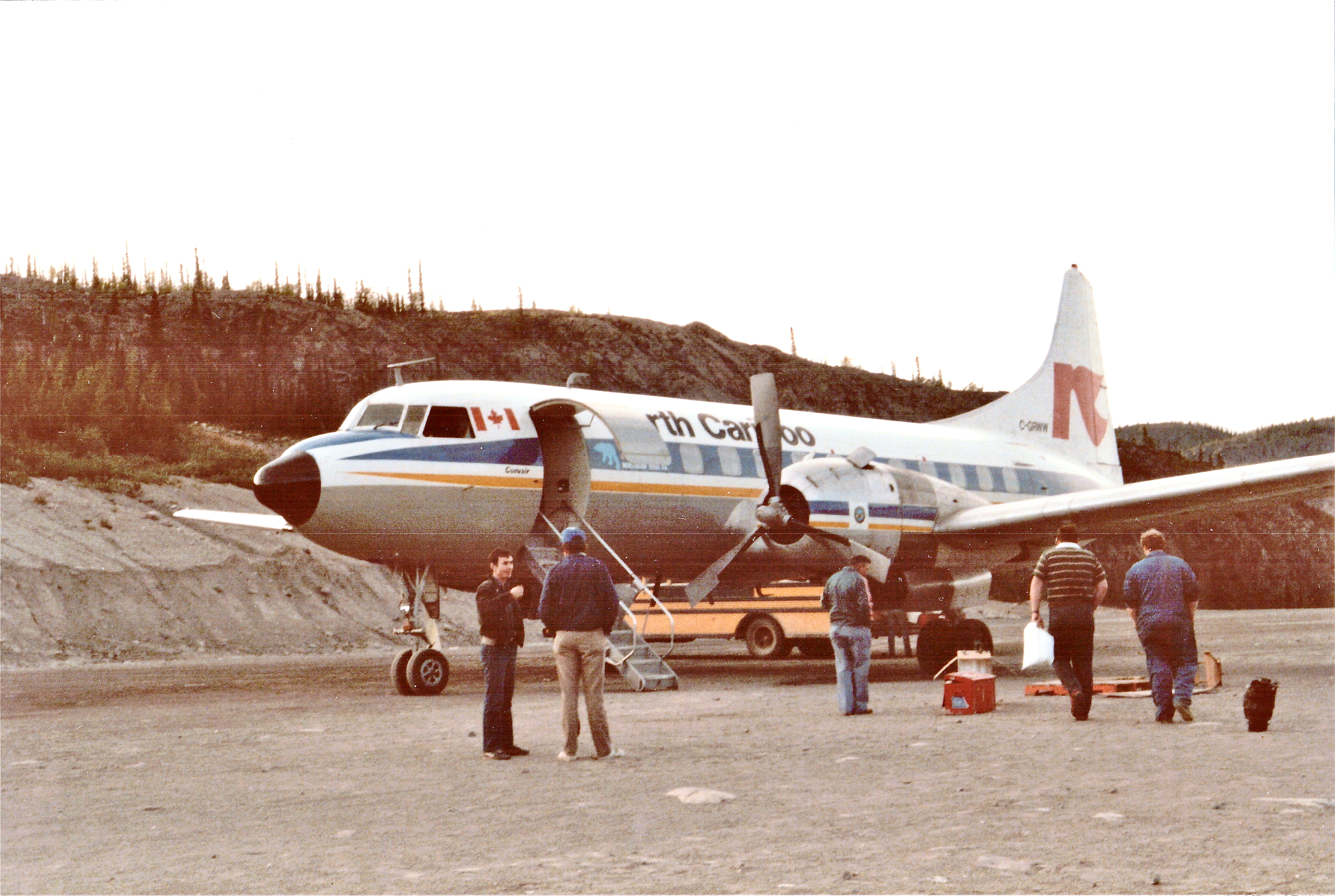
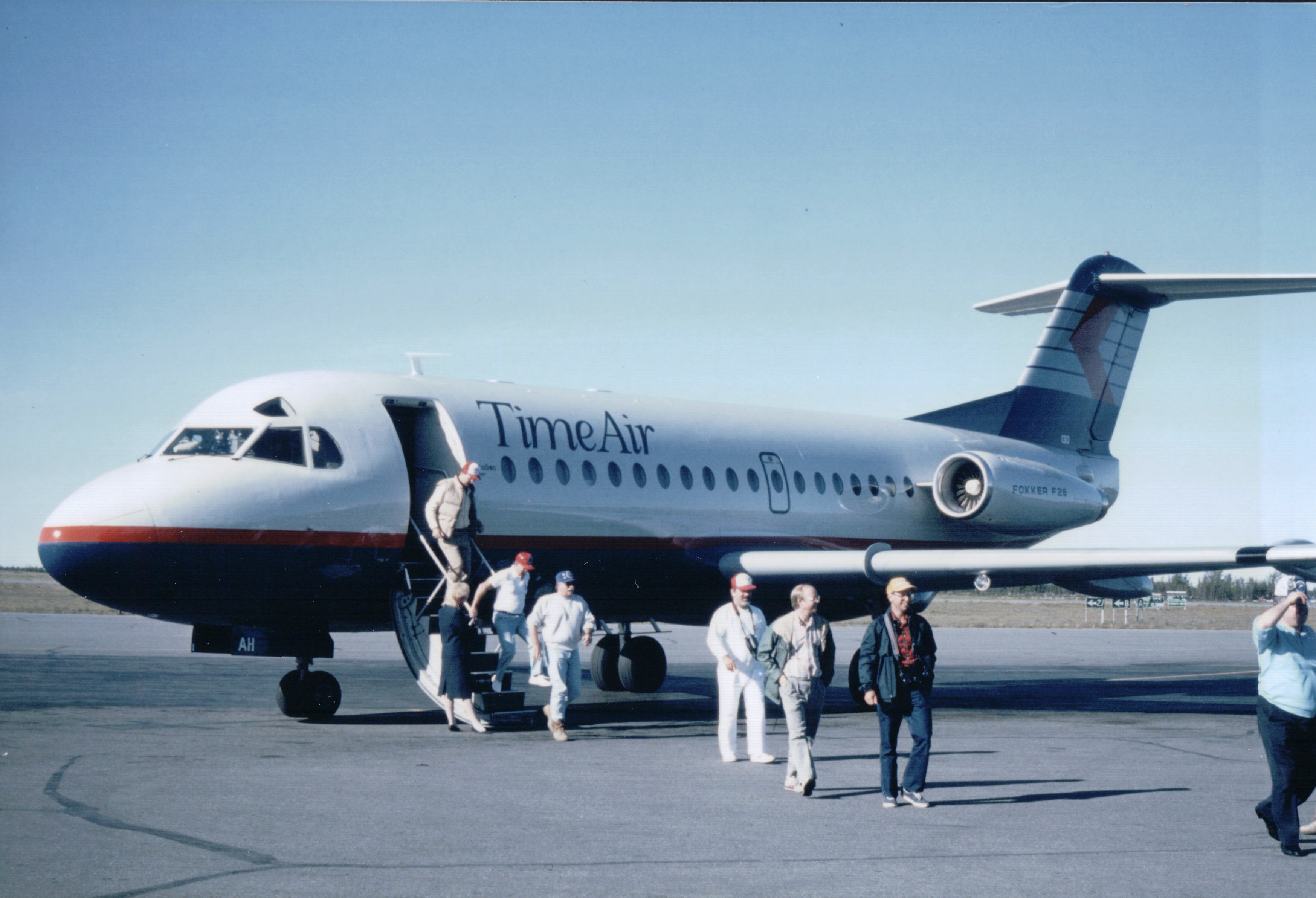
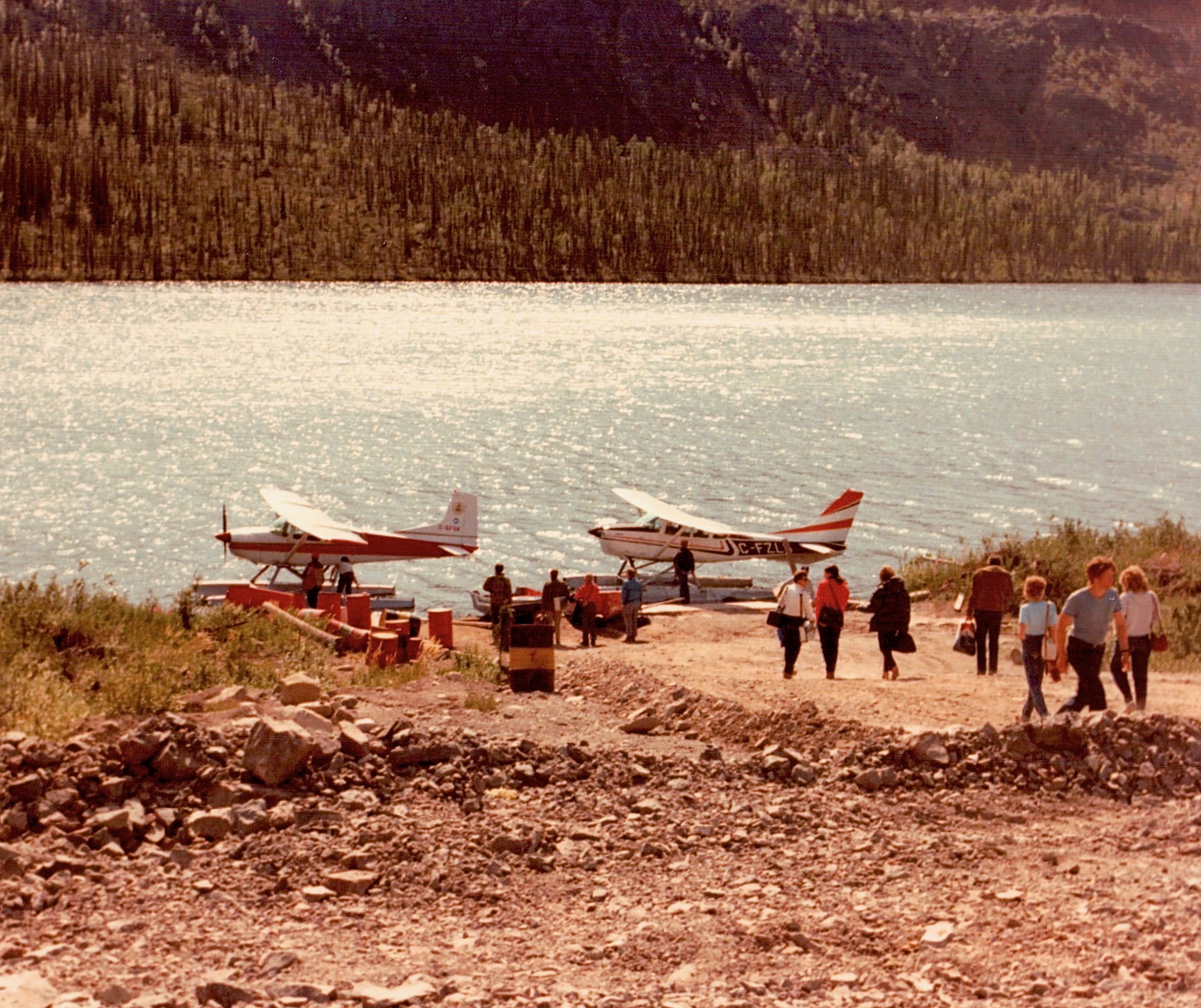
Once you touched down, guests were flown over to the lodge from Glacier Lake, which was just a short walk from the strip, on either a Cessna 185, or on one of two Beavers, with one of the Beavers – C-GMKP – piloted by none other than the indomitable Hartley Marsh:
http://www.greatbearlakeoutdoors.com/stories/the-people/item/89-hartley-marsh-bush-pilot
There was also a twin engine Beechcraft that would turn up from time to time, that was used to move people and supplies to various places on the lake.
These aircraft remained at the lodge throughout the season, and were used primarily for side trips.
Trophy
The only brochure I have been able to find, indicates that guests were flown directly to the lodge from Edmonton, on what appears to be a Convair 640, or perhaps a 580 (?), operated by Time Air.
That being said, I did find a picture showing a Twin Otter tied up at the main dock, which appeared to be either loading, or off-loading passengers.
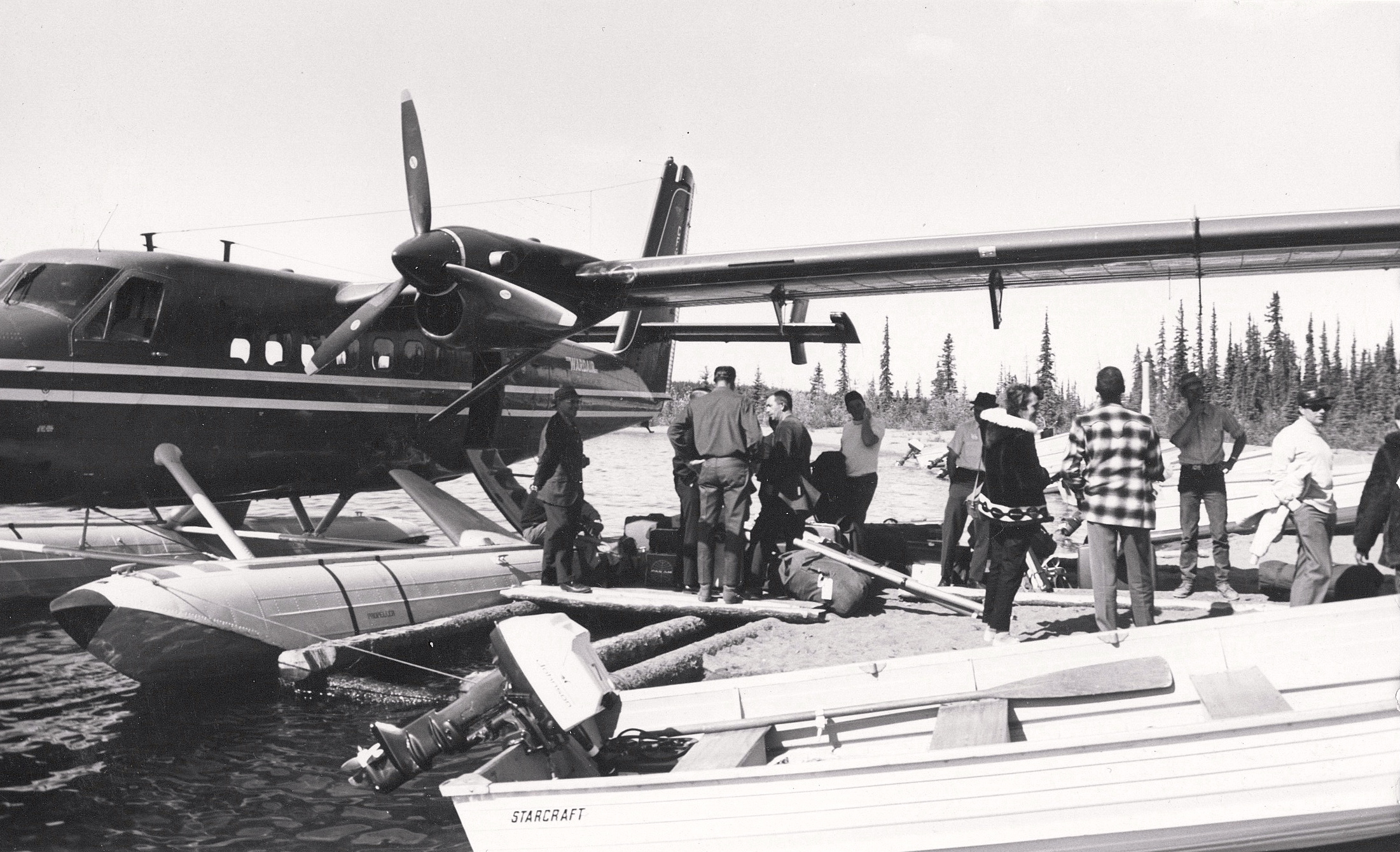
When Plummer’s first took over management, we initially landed at their Great Bear Lake Lodge, and were then flown over to the strip at Trophy on Plummer’s DC3. Depending on the number of guests, they also used the “Voyage Air” Beaver that was based at the lodge for the season, to fly some people over.

We always strove to get on the Beaver if possible, as we could usually talk the pilot into flying low over some of the areas we planned to fish, in order to see if there was any ice around, and perhaps spot any Lake Trout that might be swimming around near the shore, in the crystal clear water.
In later years, we flew directly to the lodge from Yellowknife on a Dash 7 operated by Air Tindi/Tłı̨chǫ Air Inc., which remains the way guests are transported to the lodge to this day.
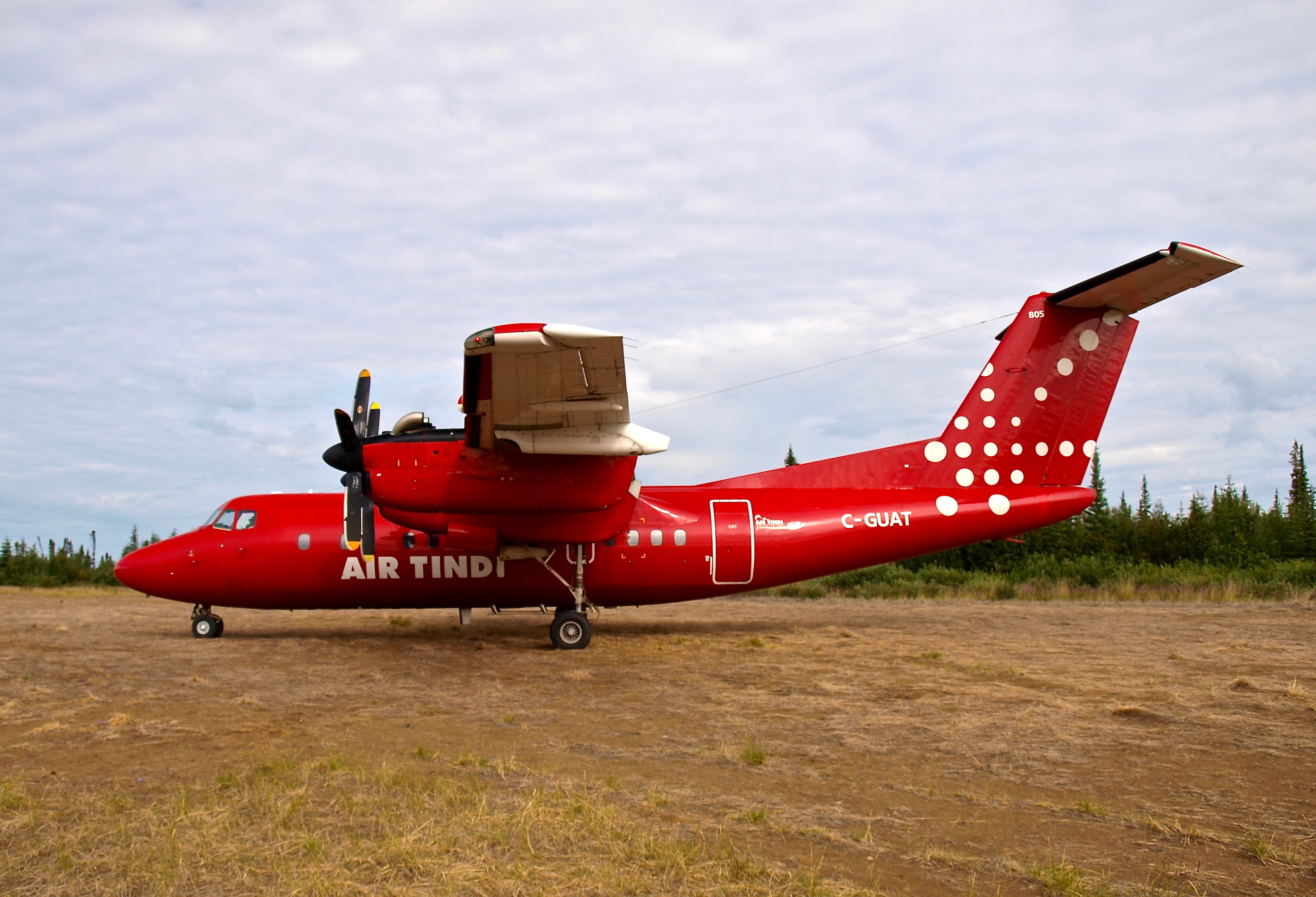
Once you land, you have a choice of either walking along the road from the strip, or hitching a ride on the trailer that is hooked up to a loader, down to where the boats are waiting to take you on the short run over to the lodge.
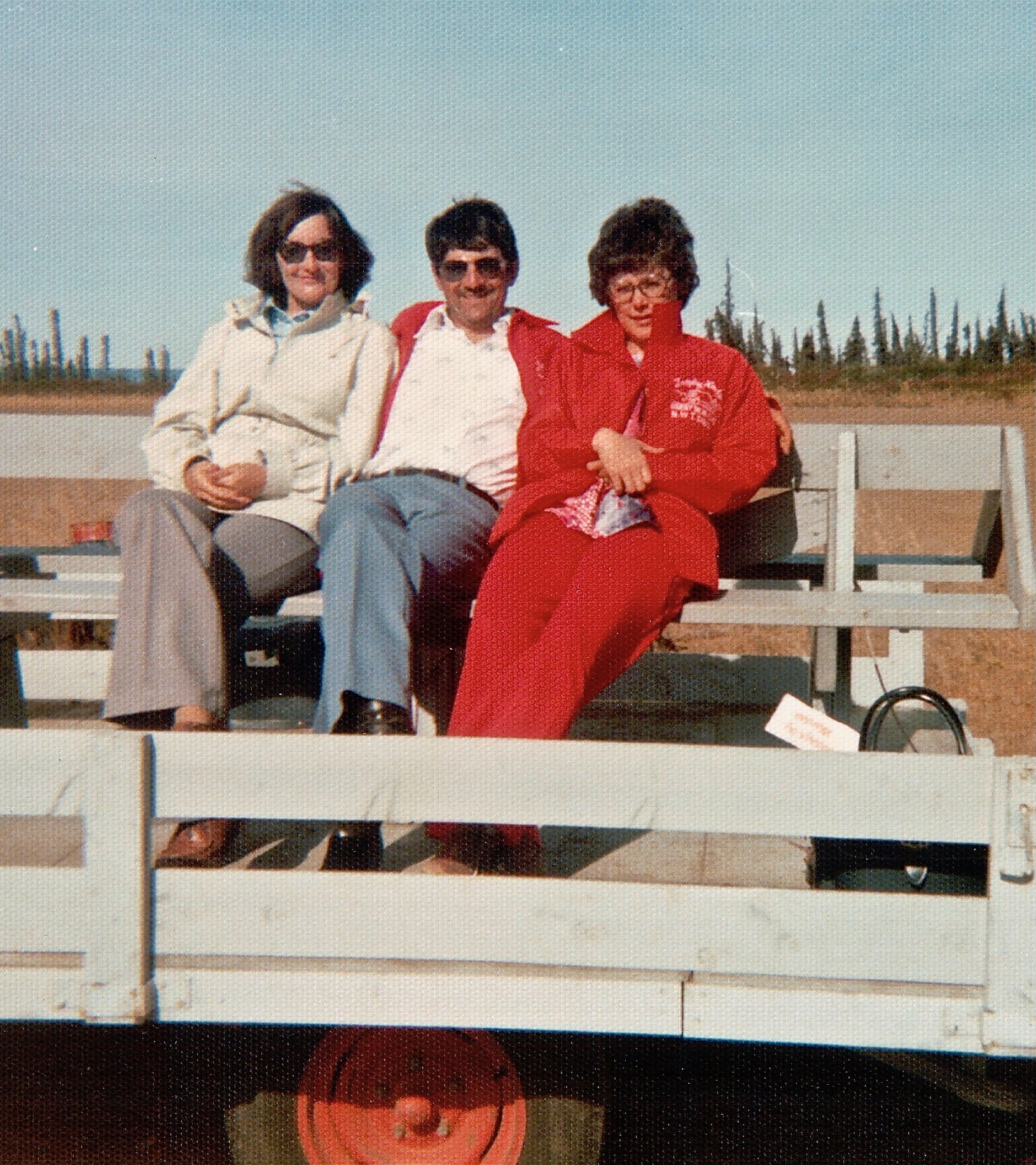
Arctic Circle
At first trips began in Winnipeg, then later on they moved the starting point to Edmonton, but I’m unaware of when that change took place.
Landing at Port Radium, guests often shared the same charter with those going to Branson’s Lodge, and were then shuttled over to the lodge in either a Beaver or Cessna 185, which from 1988 to 1990, were contracted from Contact Airways, who at that time, operated out of Fort McMurray, Alberta.
From 1967 through 1969, and perhaps longer, they primarily used aircraft chartered from Gateway-Aviation, who were based out of Edmonton Municipal Airport, to fly guests on various side trips, and at least on one occasion, brought staff to the lodge from Délı̨nę. The aircraft used by Gateway-Aviation included a Beech 18, DeHavilland Otter, and a Cessna 206.
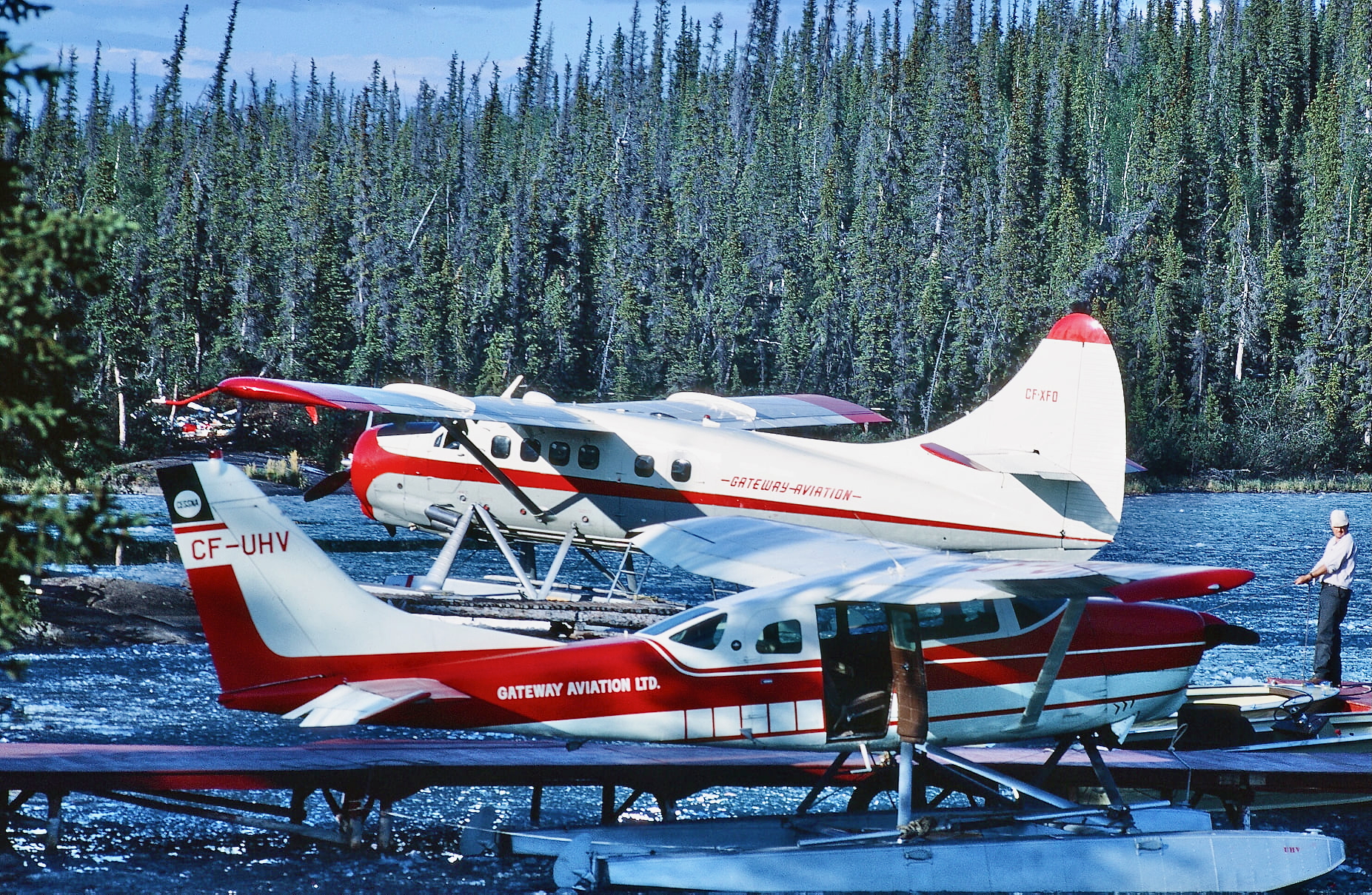
In 1969 they also chartered a Beaver operated by Wardair, to bring guests gear and supplies in from Yellowknife.
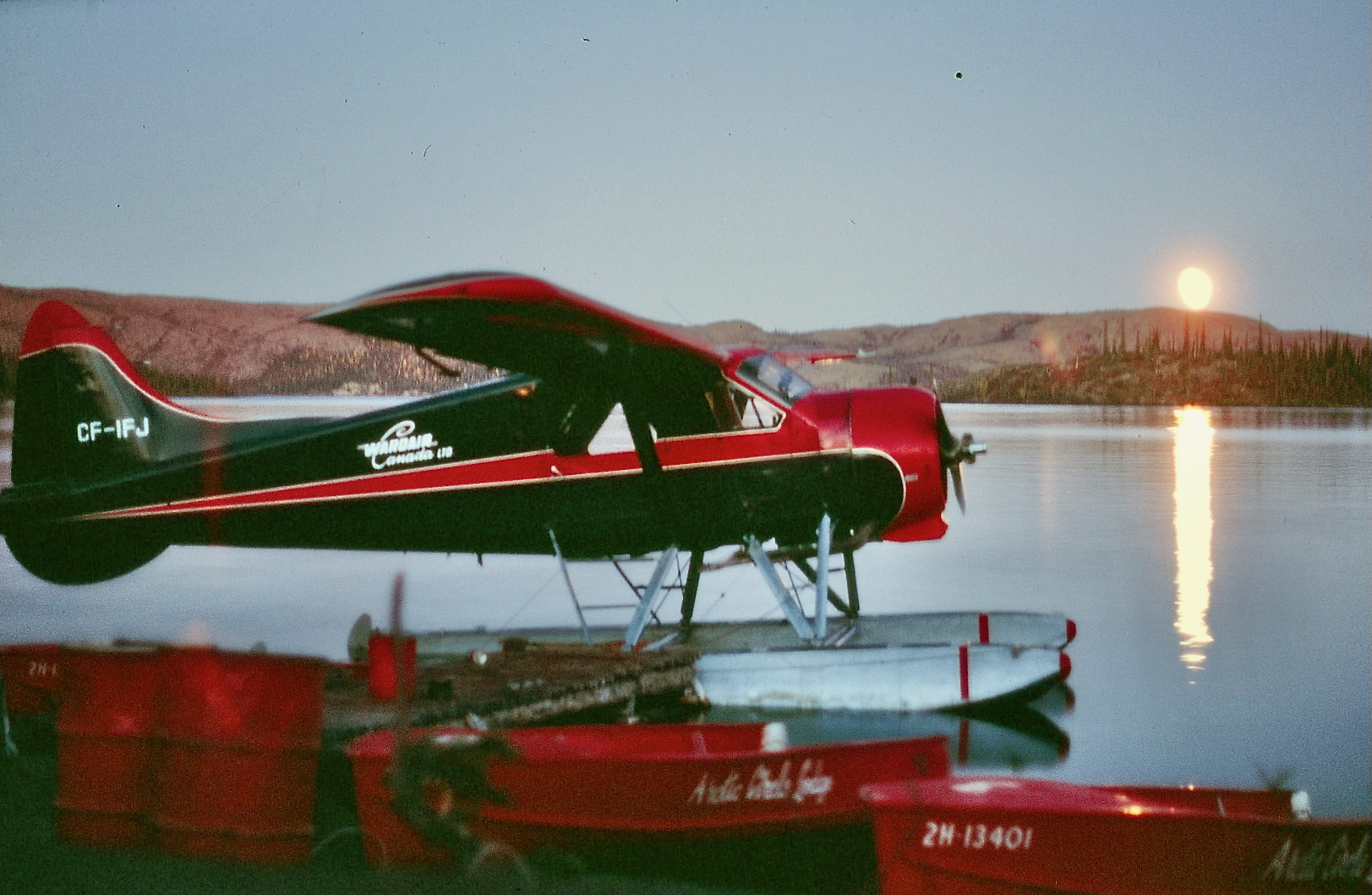
Great Bear Lodge
Edmonton was the point of embarkation for your trip, and guests were flown directly to the strip at Sawmill Bay via a Pacific Western charter, on what appears to have been a DC4. Flight time to cover this 1000 mile journey was approx. 4 ½ hours.
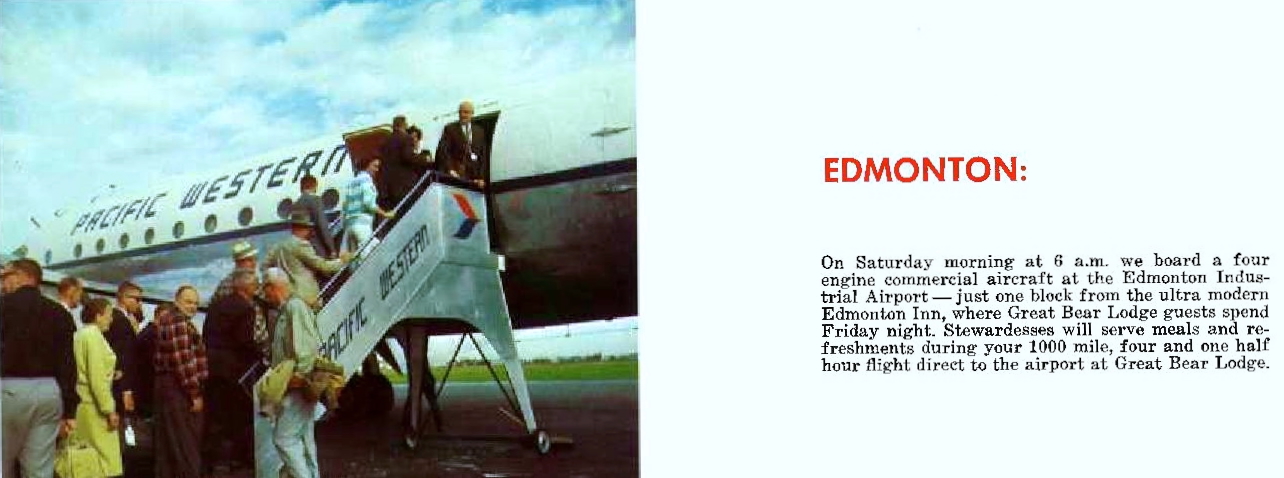
In their inaugural season they only had a total of 11 guests for the first 2 weeks, therefor I suspect that initially they may very well have used smaller aircraft.
Roll Call
Below are the names of numerous guides, staff, and camp managers, who have worked at the various lodges over the years, many of which I have had the pleasure of meeting, and in some cases, spending time on the water with.
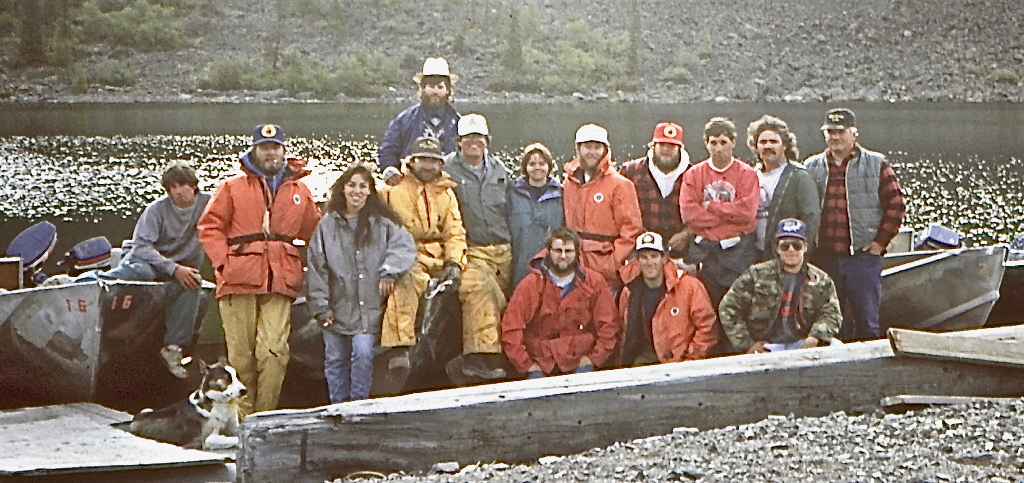
This is not an exhaustive list by any means, and as you can see, I’m missing a number of last names, so please let me know if you can fill in any of the blanks, and/or add some names to the list.
So, without any further ado, I will now call the roll:
Paul Reynolds, Noel Sinclair, Andrew Flood, Harvey Anderson, Tom Badger, Noel Alfonso, Zen, Ed “No Fish/No Beans” Oudzi, Paul Barta, Dave Jackson, Chuk Coulter, Josh Gelinas, Andrew Townsend, Chris Brekke, Steve the “Fly’n Hawaiian” Gardner, Chris Ireland, Dave Orr, Jarvis and Sydney Grey, Shane Jonkers, June and Dean Curry, Tina and Darrell Cadorette, Pike Mike, Maureen Mcneilage - aka Aunty Mo, Warren Plummer, Chummy Plummer, Ryan O’Donnell (OD), Al, Brad Kingston, Reid Stoyberg, Terry Grant, John C., Cam Baty, Simon and Dawn from Kugluktuk, Larry the Pilot, “Dreamy” John ( Pilot), Iron Man ( Pilot), Dave Orr, Brien Morgan, John Tutcho, Darrel the “Shuttle Guy,” Yvonne - Plummer’s Official Airport Greeter and Guest Wrangler, Justin, Hayden, “Sky Puppy “(185 Pilot at Branson’s), Hartley Marsh, Arnold -Branson’s Outpost Manager/Cook, Dylan Weese, Mark Moses, Denis McMahon, John Stoby, Brennon Schmidt, Jeff Fisher, Boyd Thorsteinson, Nick Laferriere, Pandelis Kolkas, Jake Malolepszy, Chance Prestie, Alex Ginther, Jeff Todd, Kyle Brown, Matt Dick, Scotty Orr, “Panther Martin Spinner,” Shane Newberry, Ryota Oki, Andrew “Drew” Graham, Christine Pike – nee Ball - my kid, Brien Morgan, Gary Neigh, Brandon Isaac, Craig Blackie, Christopher Langeman, Rob Stewy, Carl Lanciaux, Trudy (Trophy), Colton, Rocky, Brian Halabourda, David Bouck, Robin Maharag, Ernie and Mavis Dolinsky, Mark Damaske, Walley (Branson’s), Murray (Branson’s), Ryan Silky, David Bouck, Jennifer Barr, Cam Barr, Tamera Dolinsky, Mathew “Mini Drew” Messec, Daniel Grunberg, Ed Barbossa, Ted Martineau, Jeff Flanigan, Meryl “The Squirrel” Roberts, Jeff Davis, Gord Craig, Oscar Lee, Scott Aiken, Gary Pedlesky, Jerry Tremblay, Ian Booth, Edie, Neil Harding (Branson’s Pilot), Gunther (Manager at Trophy), Marc Robinson, Gayle Renner, Eric Lund, Aiden McKnight, Amanda Lindhout, Phillip Modeste, John Stoby, Rhea, Lars, Lil’ Chris, Hiltz, Rocky, Matt S., Mike Woodward, Ernie (Trophy Mtc. Guy), Victor Dolphus, Trapper, Jamie Luce, Dominique Prinet (Pilot with Gateway- Aviation), Bill Menard, Mike Boston, Roger Shapko, Lucienne Millete, Sylvia Holzer, Grant Creasy, Pete Klaver, Jim Echols, Bruce Ashley, Jody Sawchuk, Brett Hiscock, Dale Jones, Jim Tesky, Torben Bruhn Andersen, Kim Lessing, Dave Solomon, Blain Calkins, and…
So to wrap things up for now, I hope that you enjoyed this retrospective, and please don’t hesitate to share the link to this story with anyone who you think may be interested, and if
you have any comments or can add to or correct anything in this article, I look forward to hearing from you.
I’d also like to thank Dominique Prinet, Pilot and Author of Flying to Extremes, which is well worth the read - https://aviatorsbookshelf.ca/products/flying-to-extremes-by-dominique-prinet - who took several of the pictures that were used in this article.
* Plummer’s no longer has its DC3 – The Tree River. Guests are now flown to the Tree on one of their Turbine Otters.
Image Gallery
http://www.greatbearlakeoutdoors.com/stories/stories-articles/item/228-the-lodges-past-and-present#sigProId6d56f946c9










